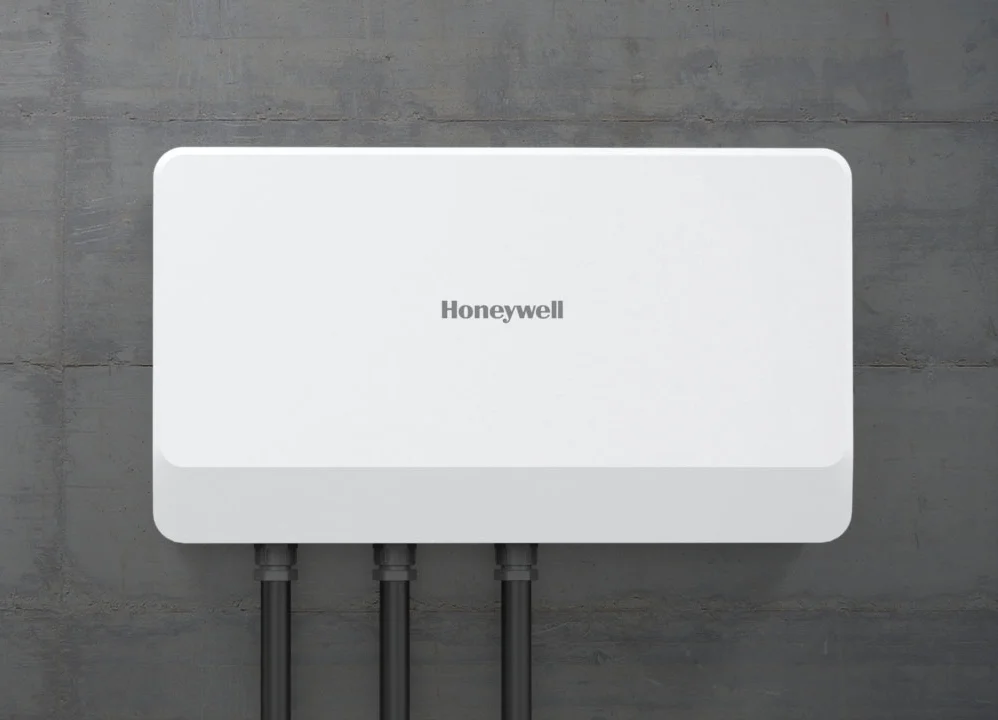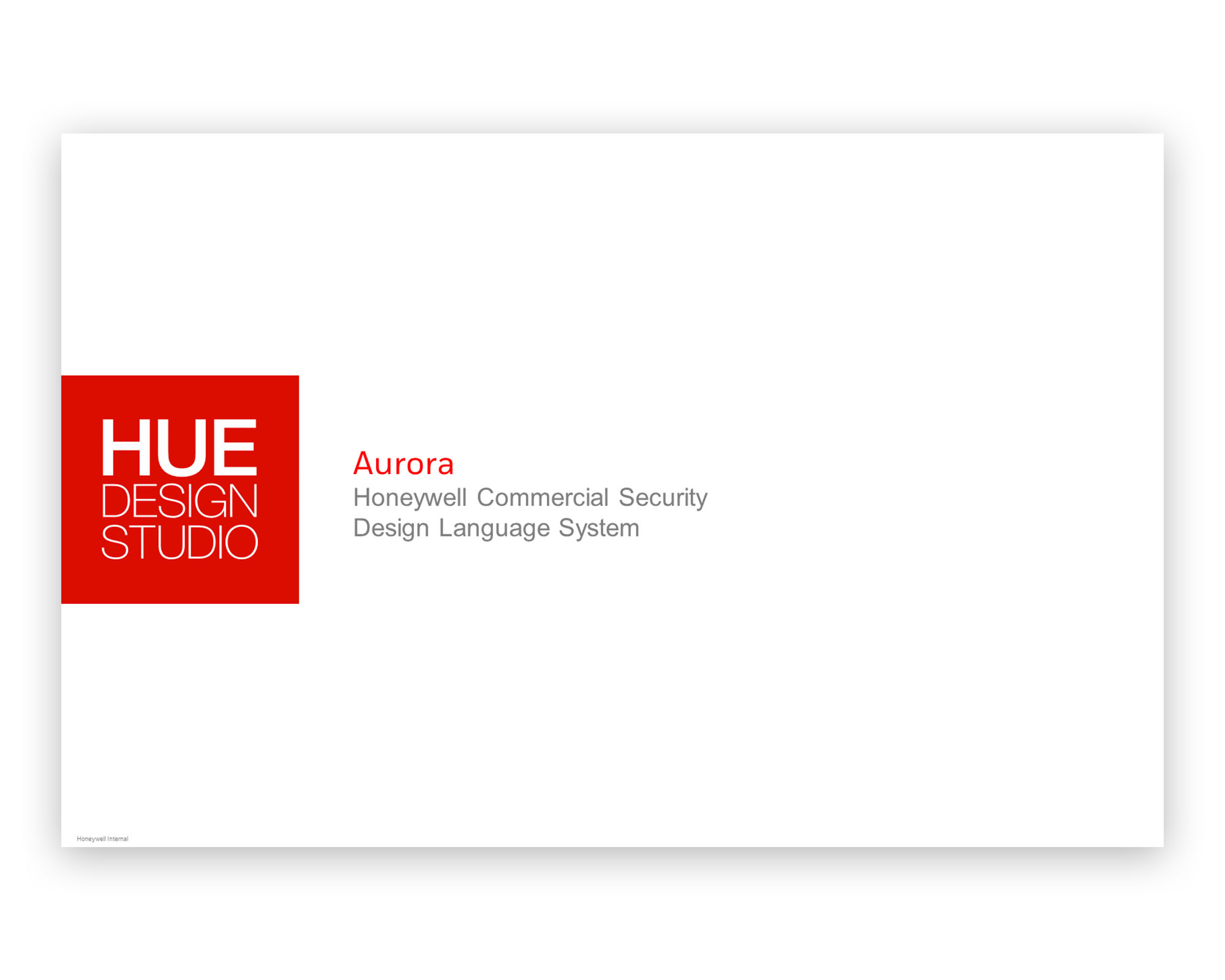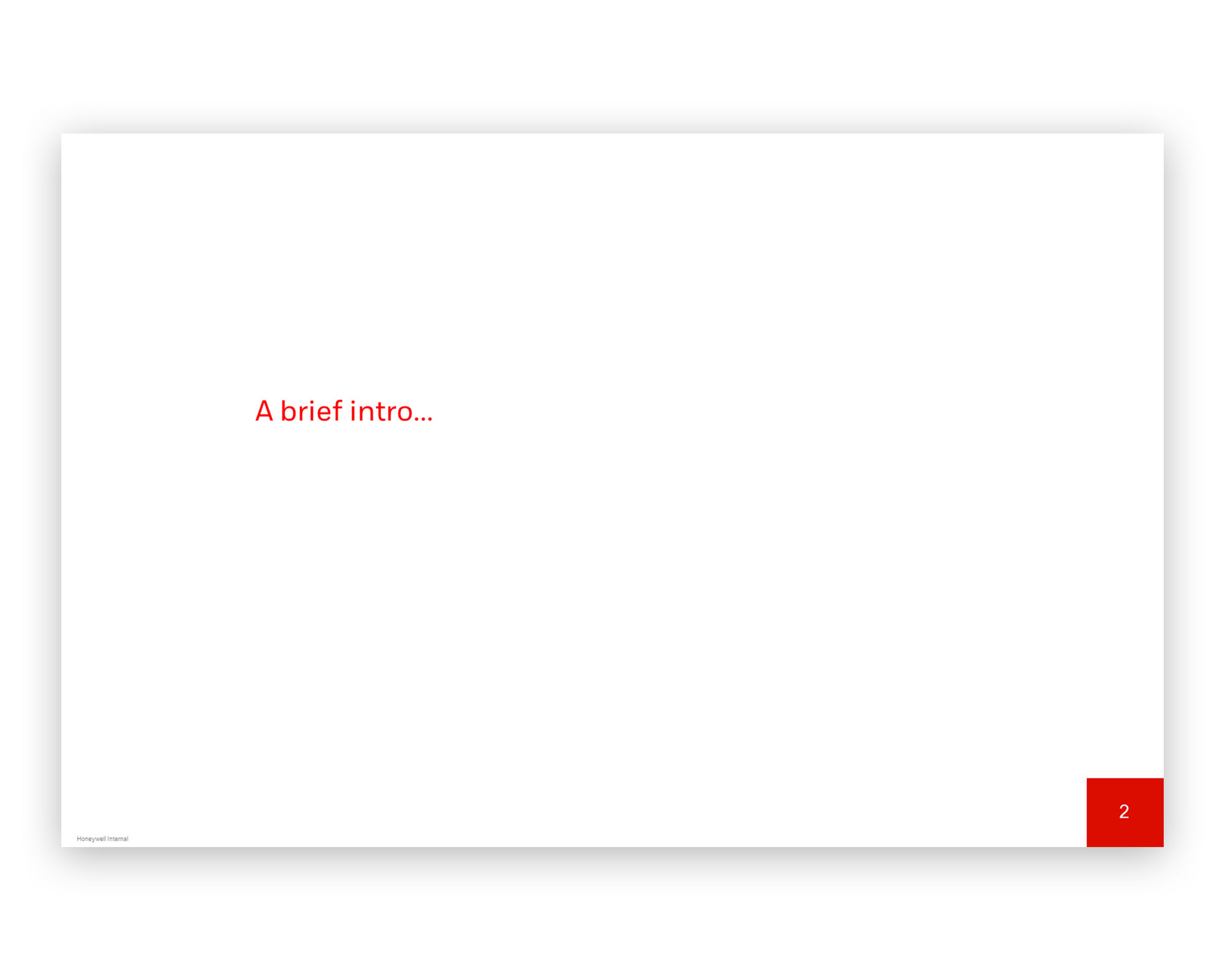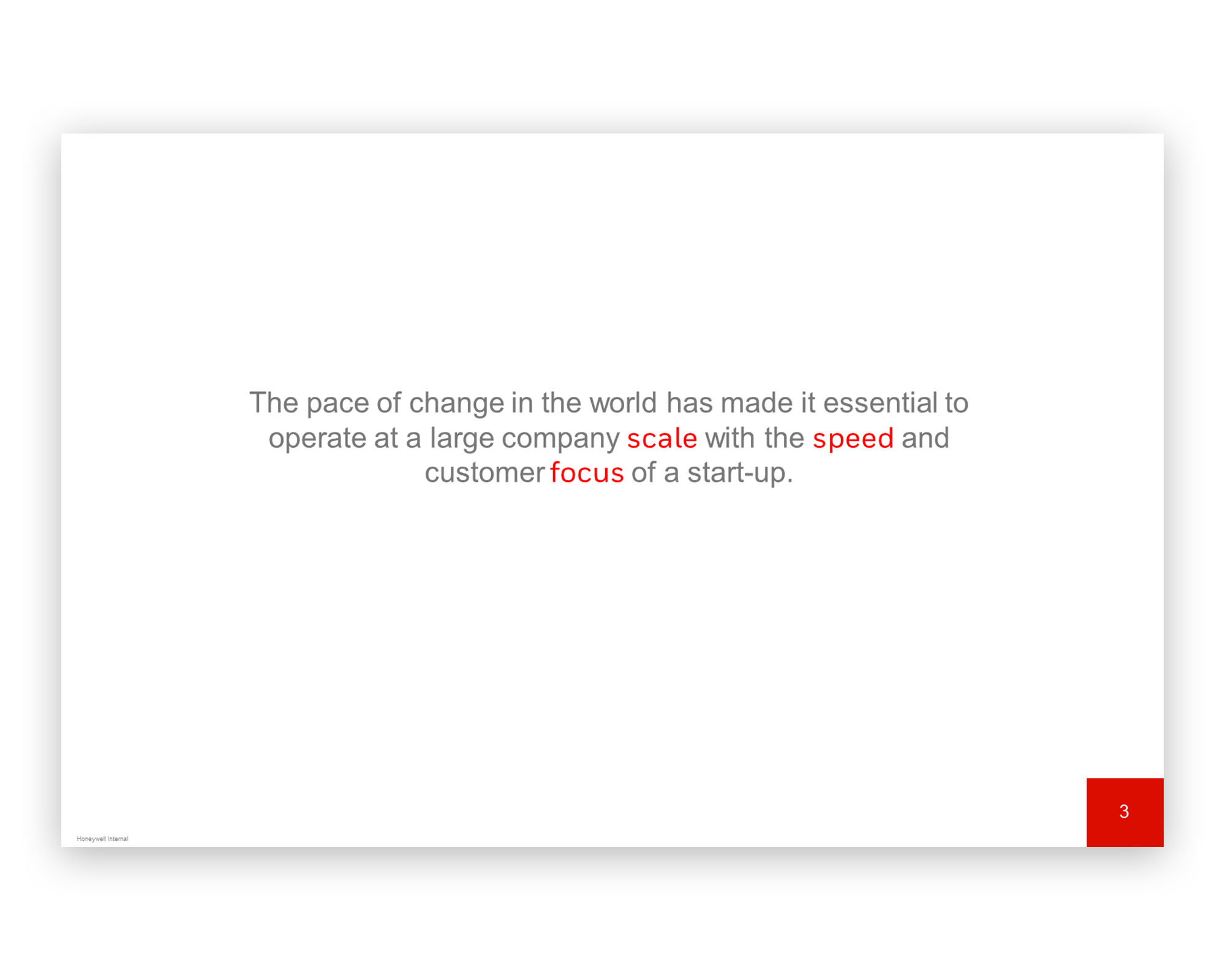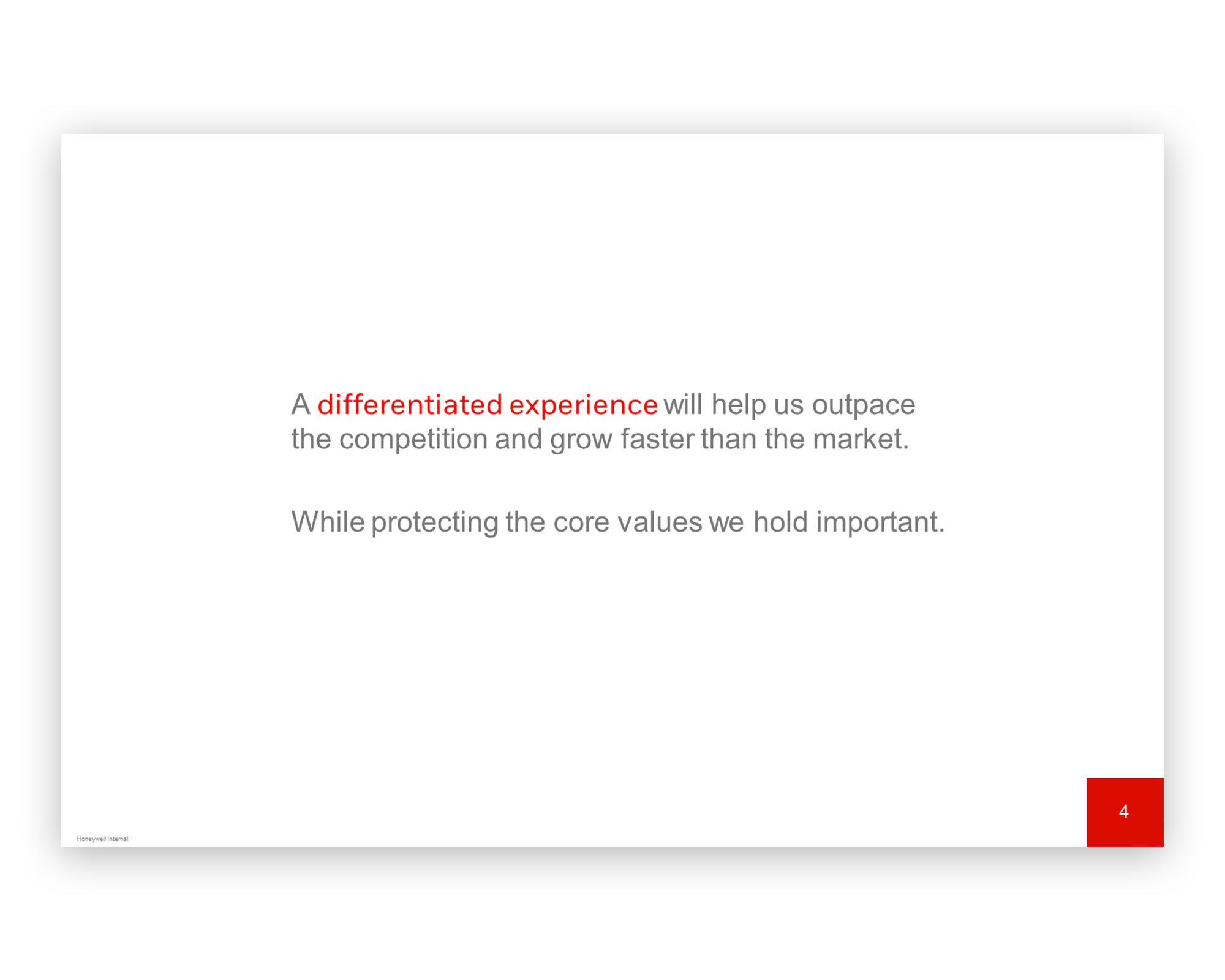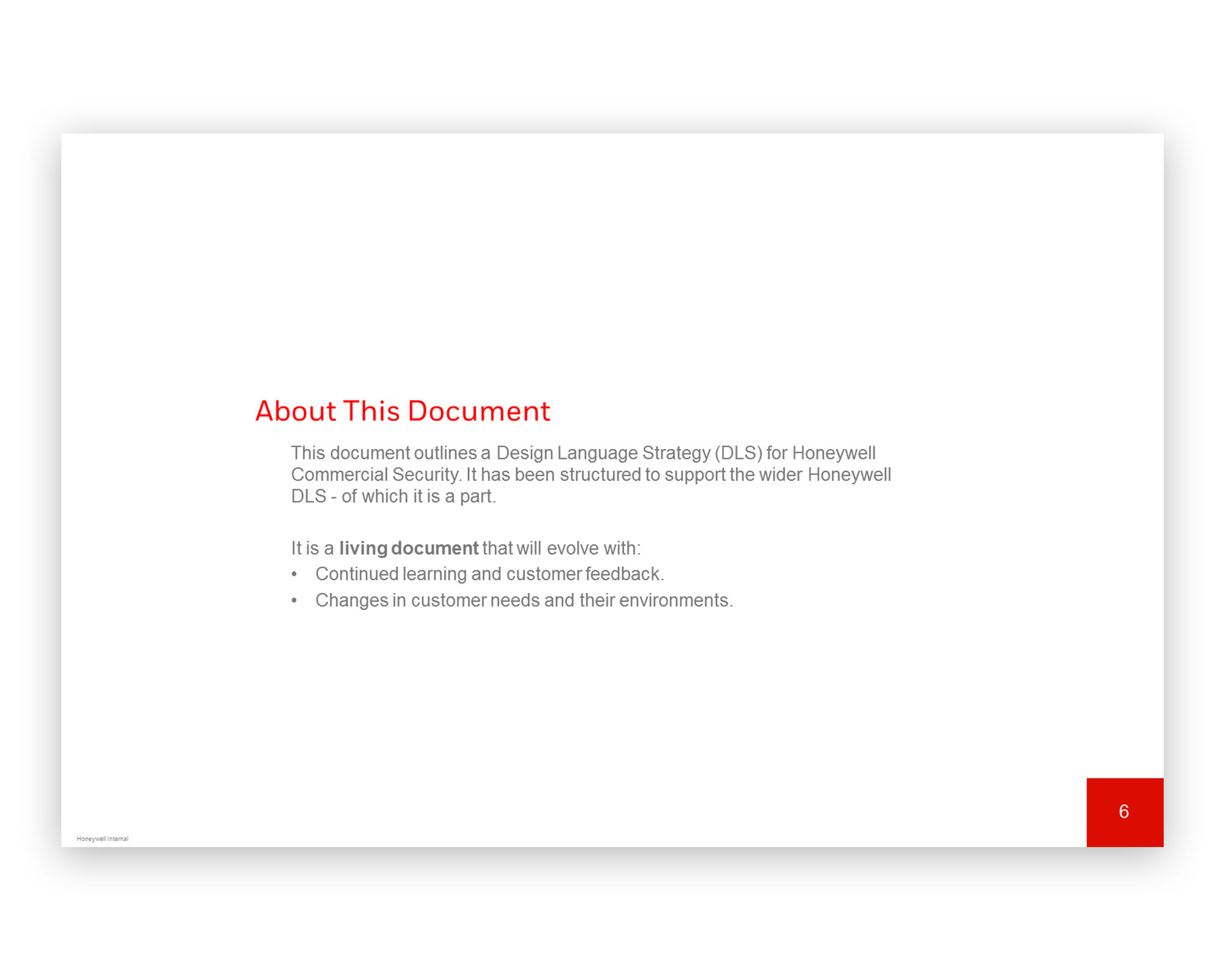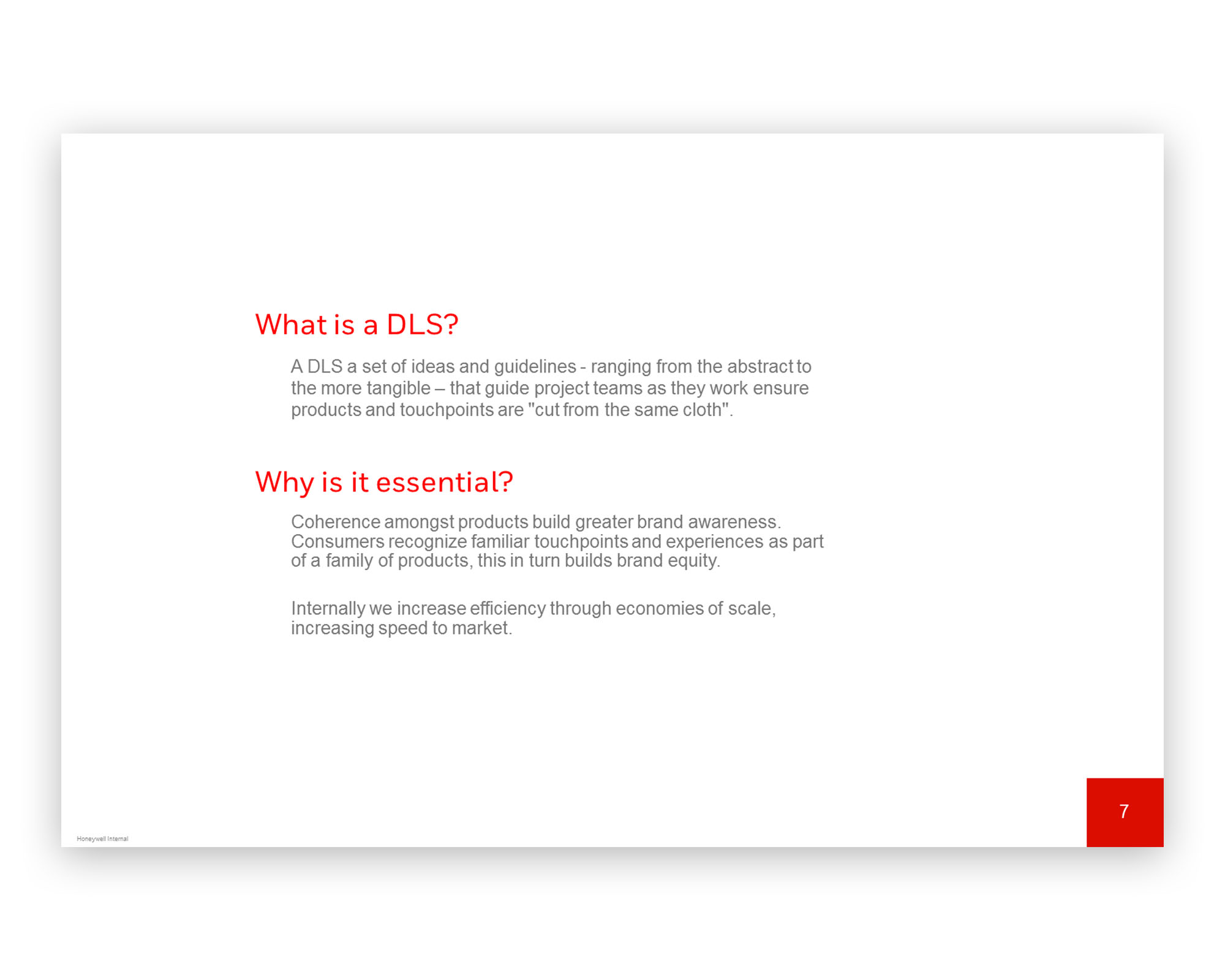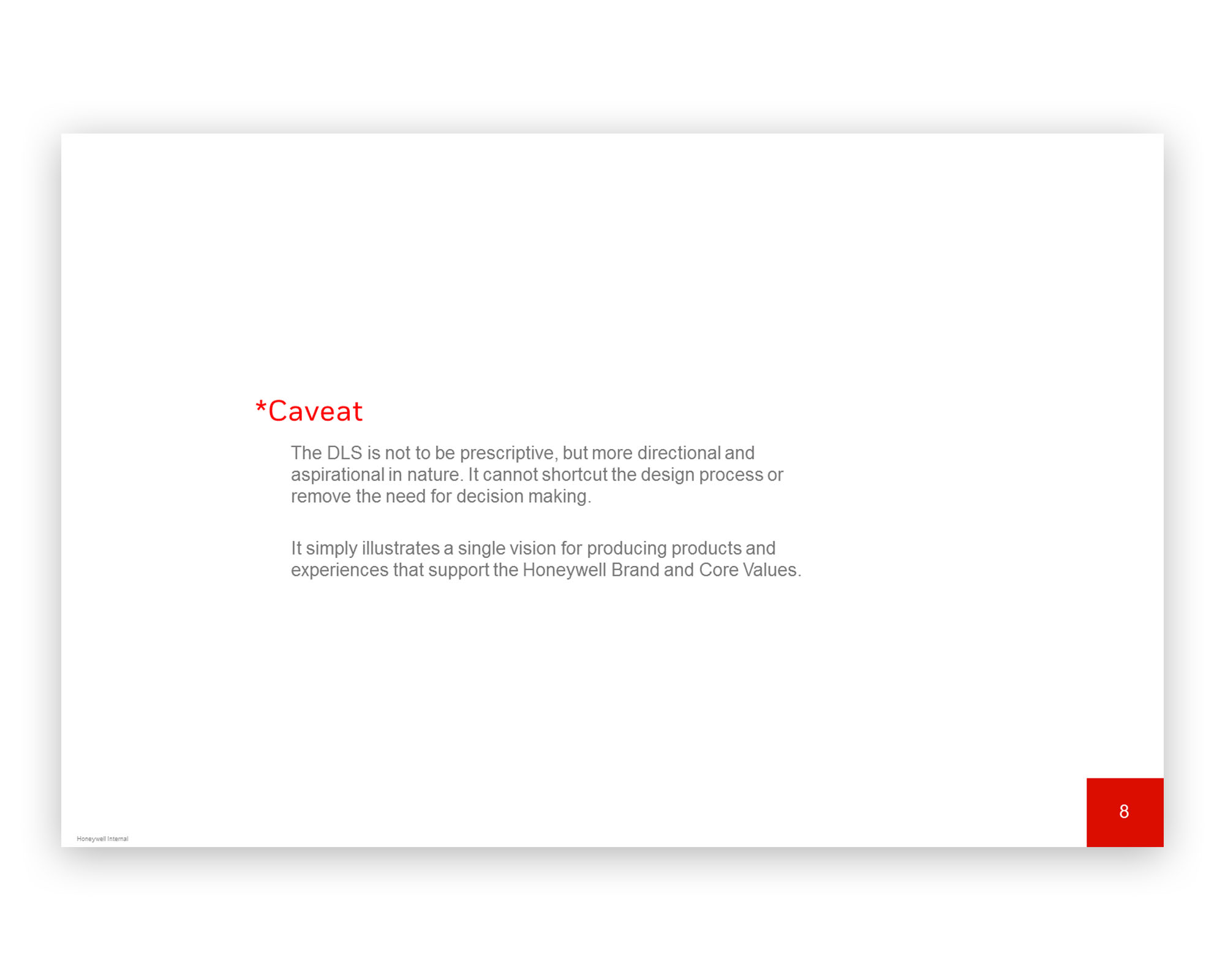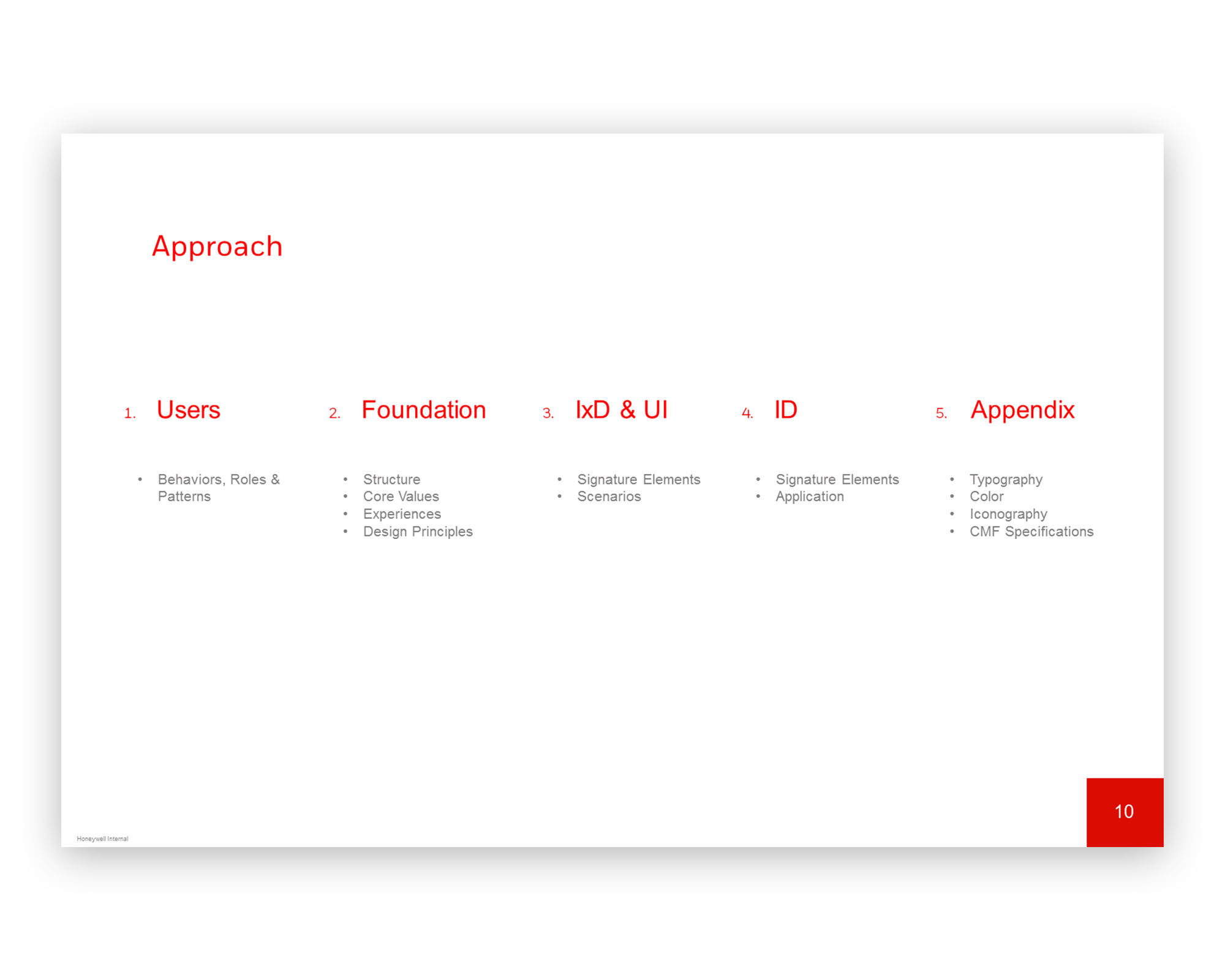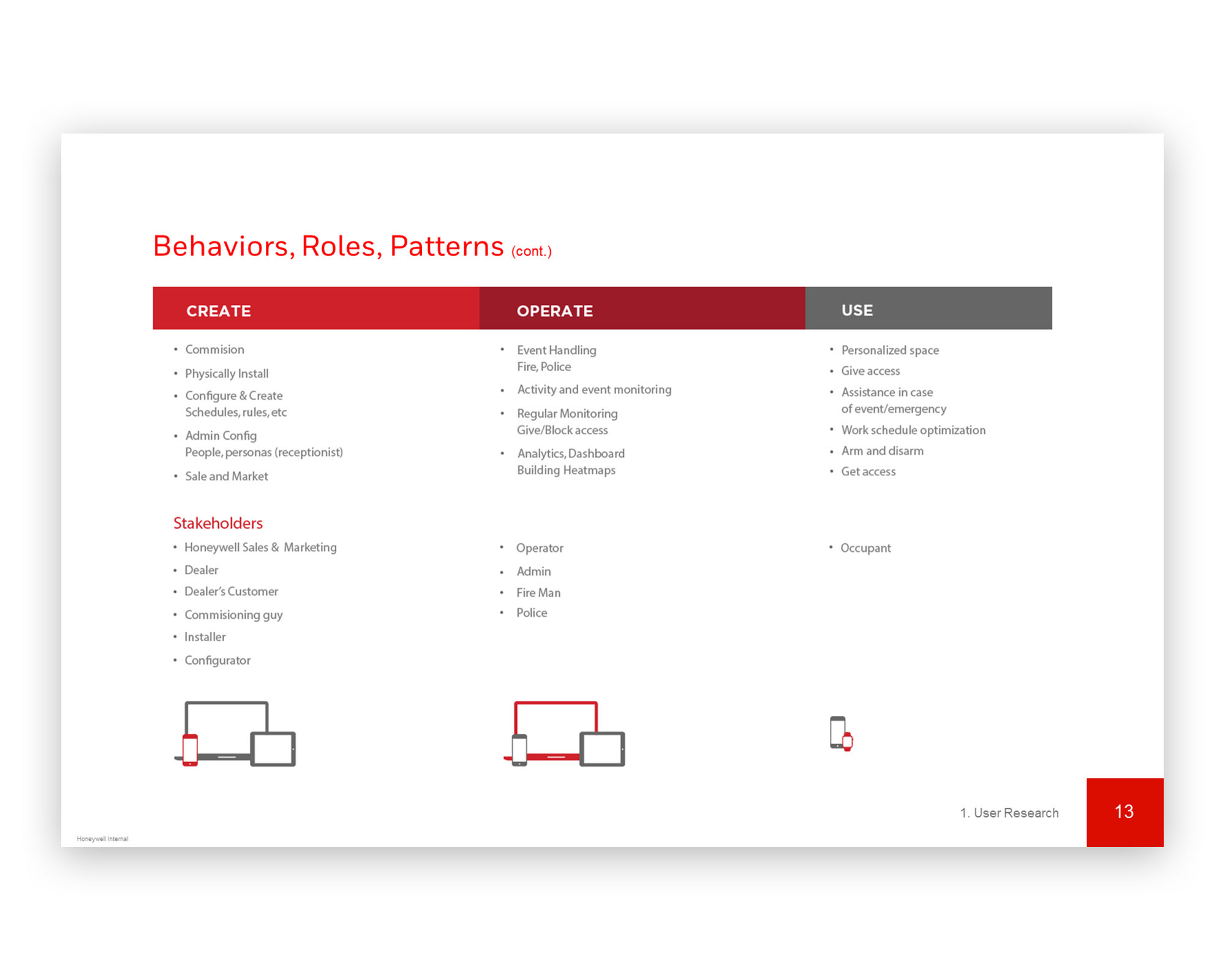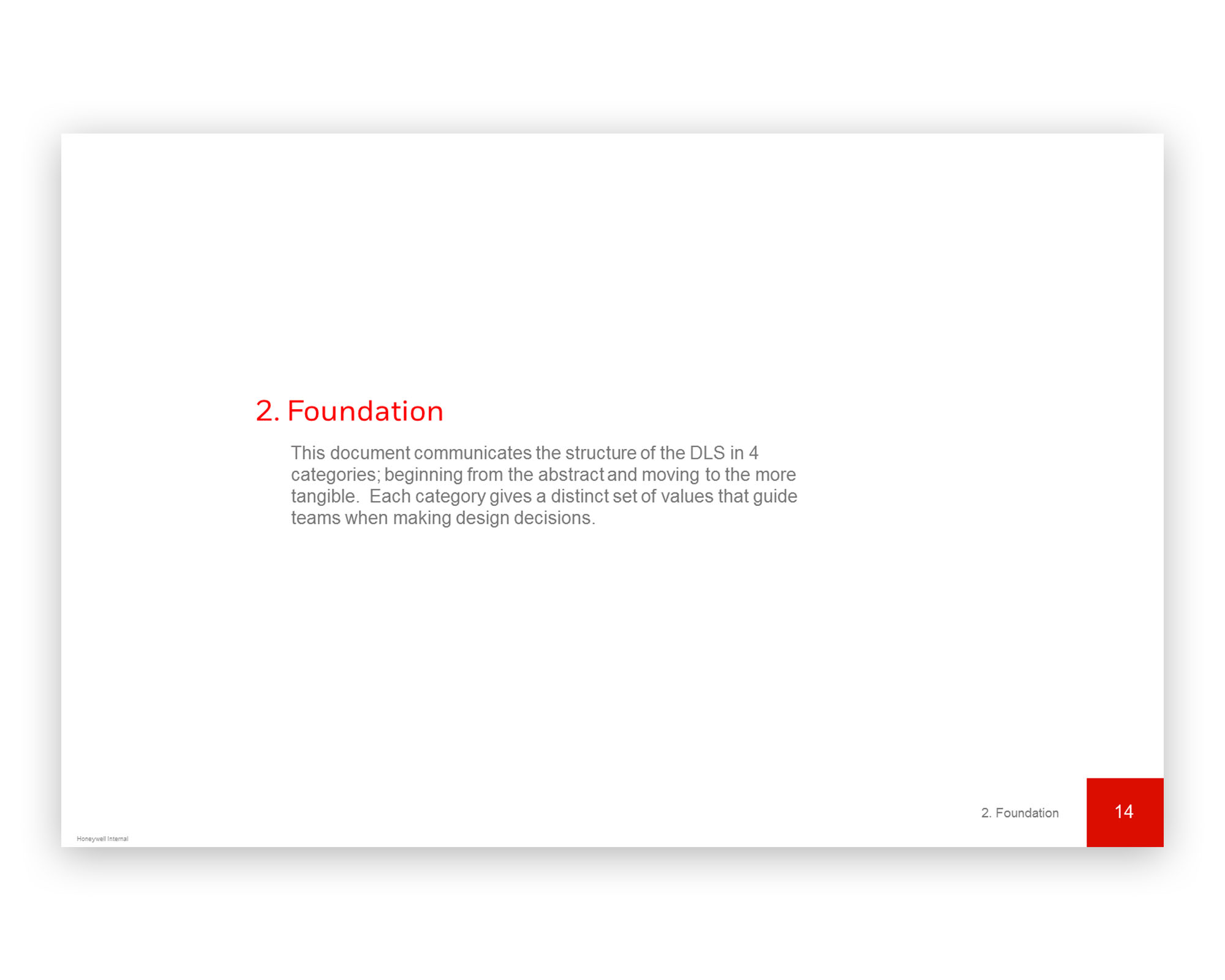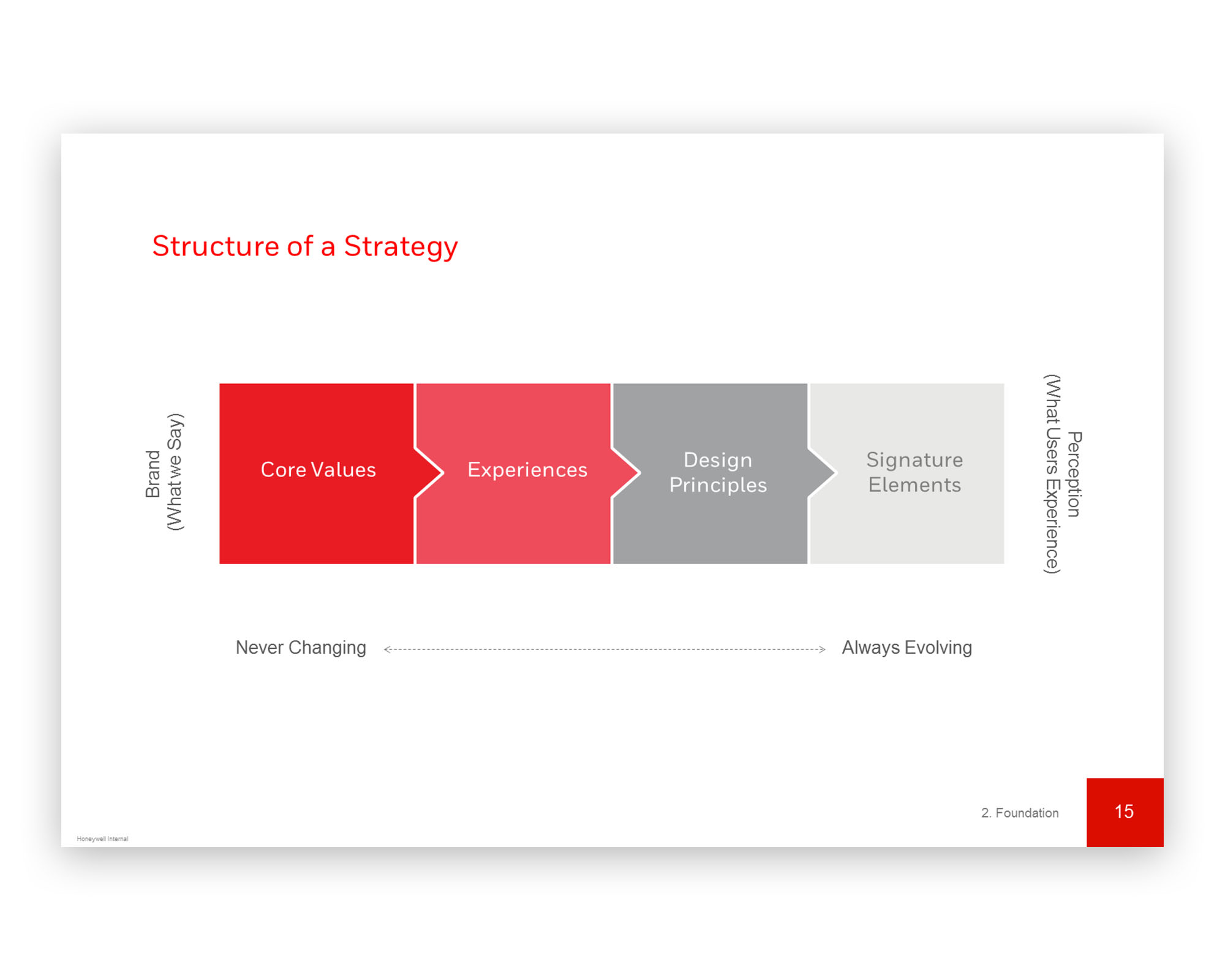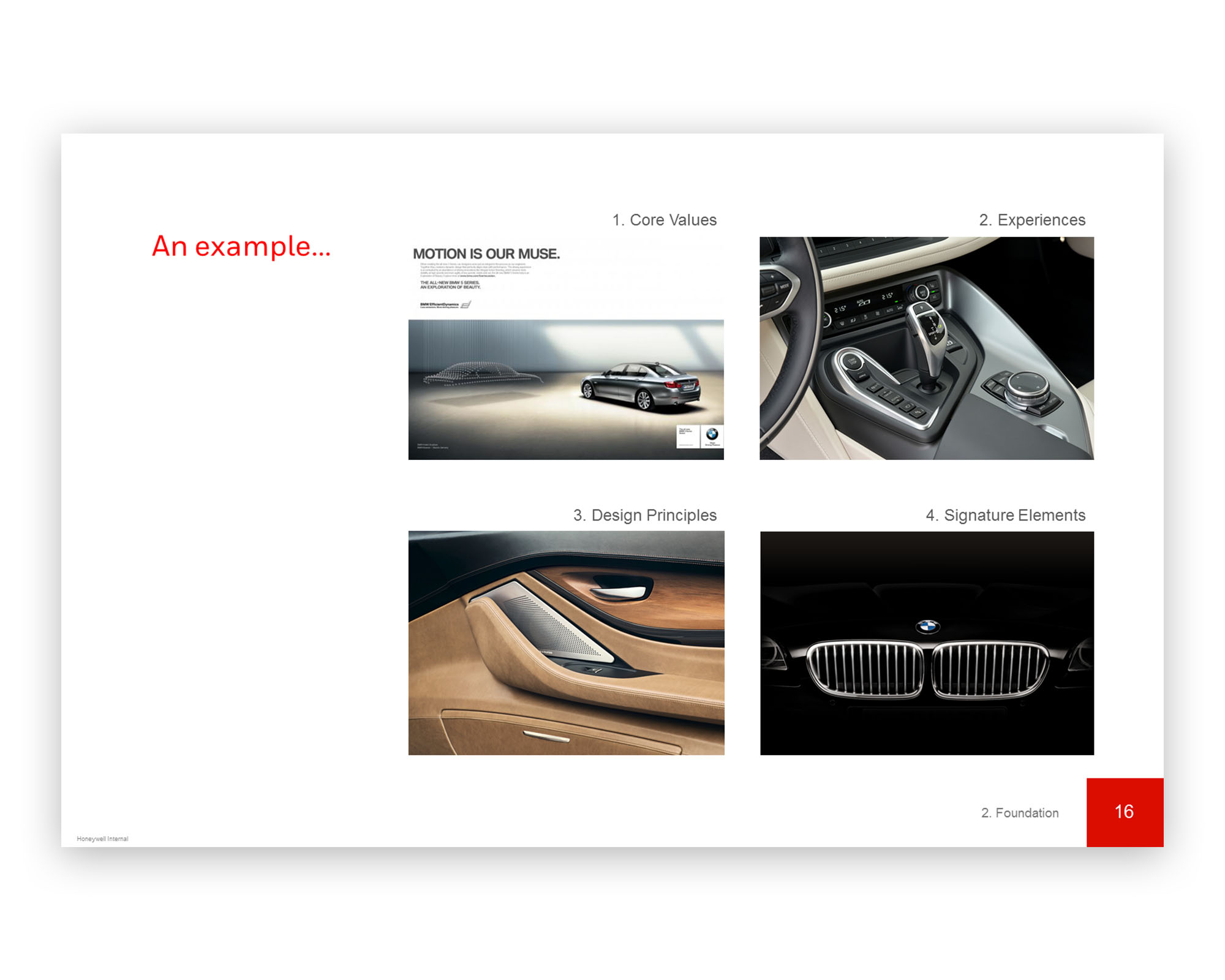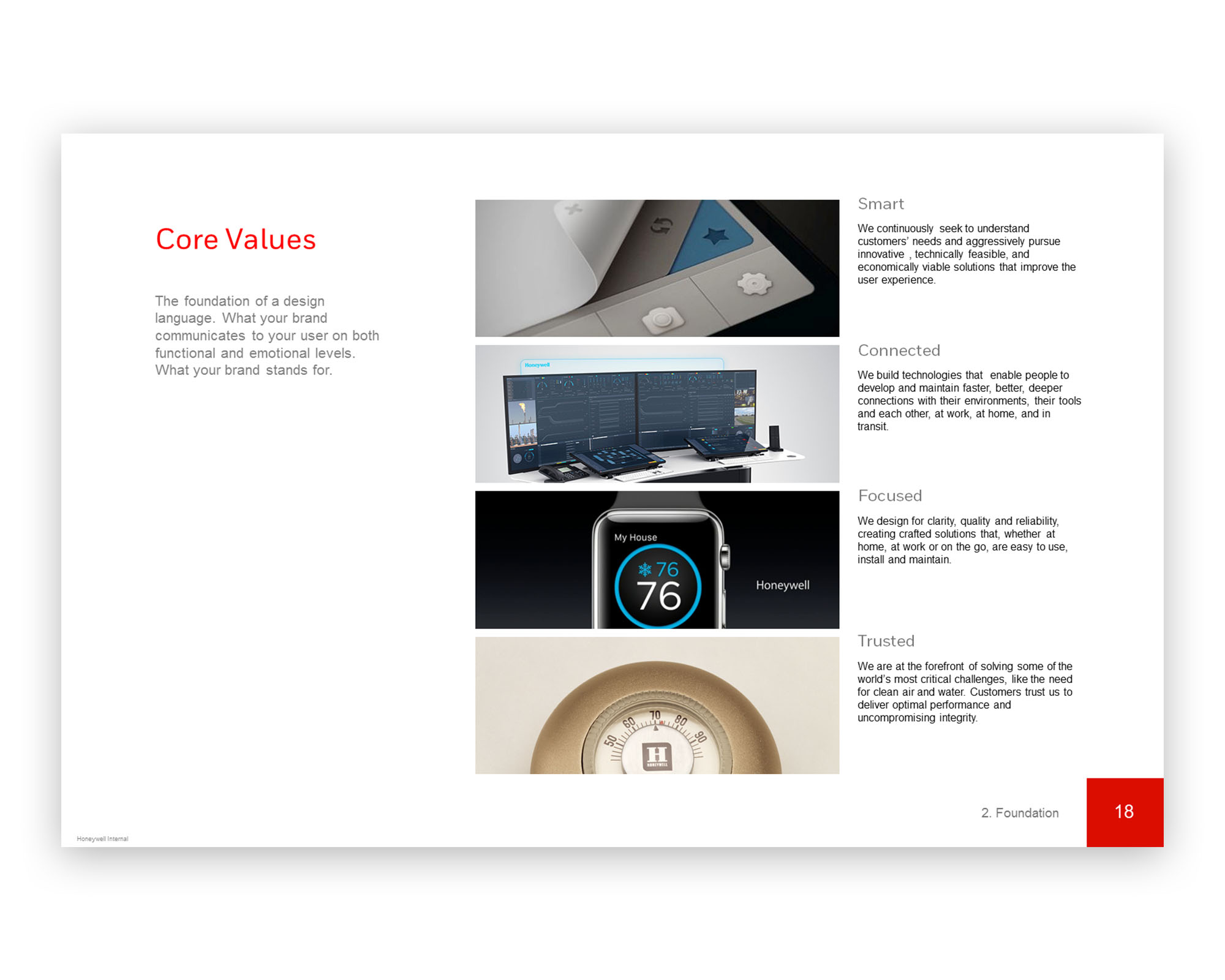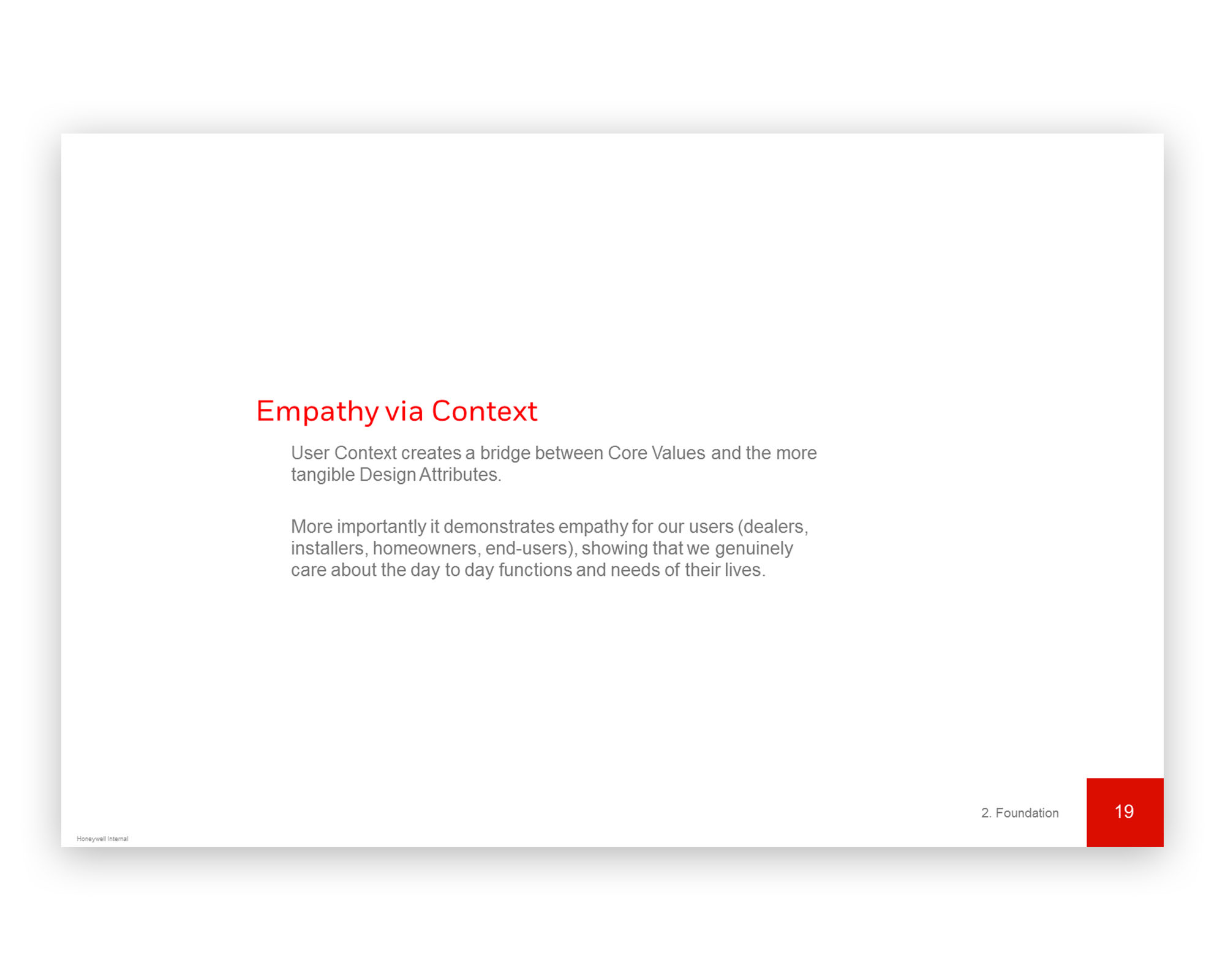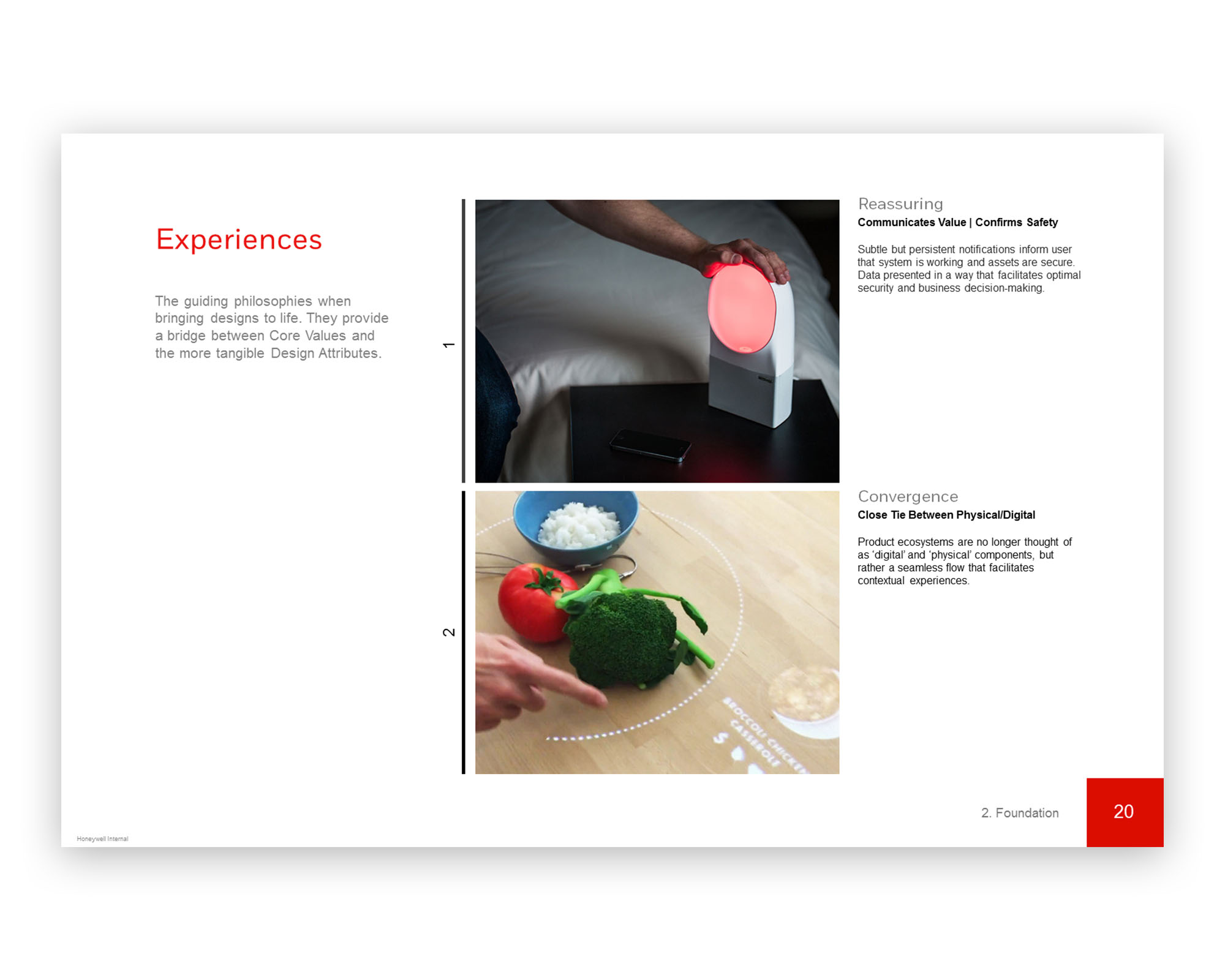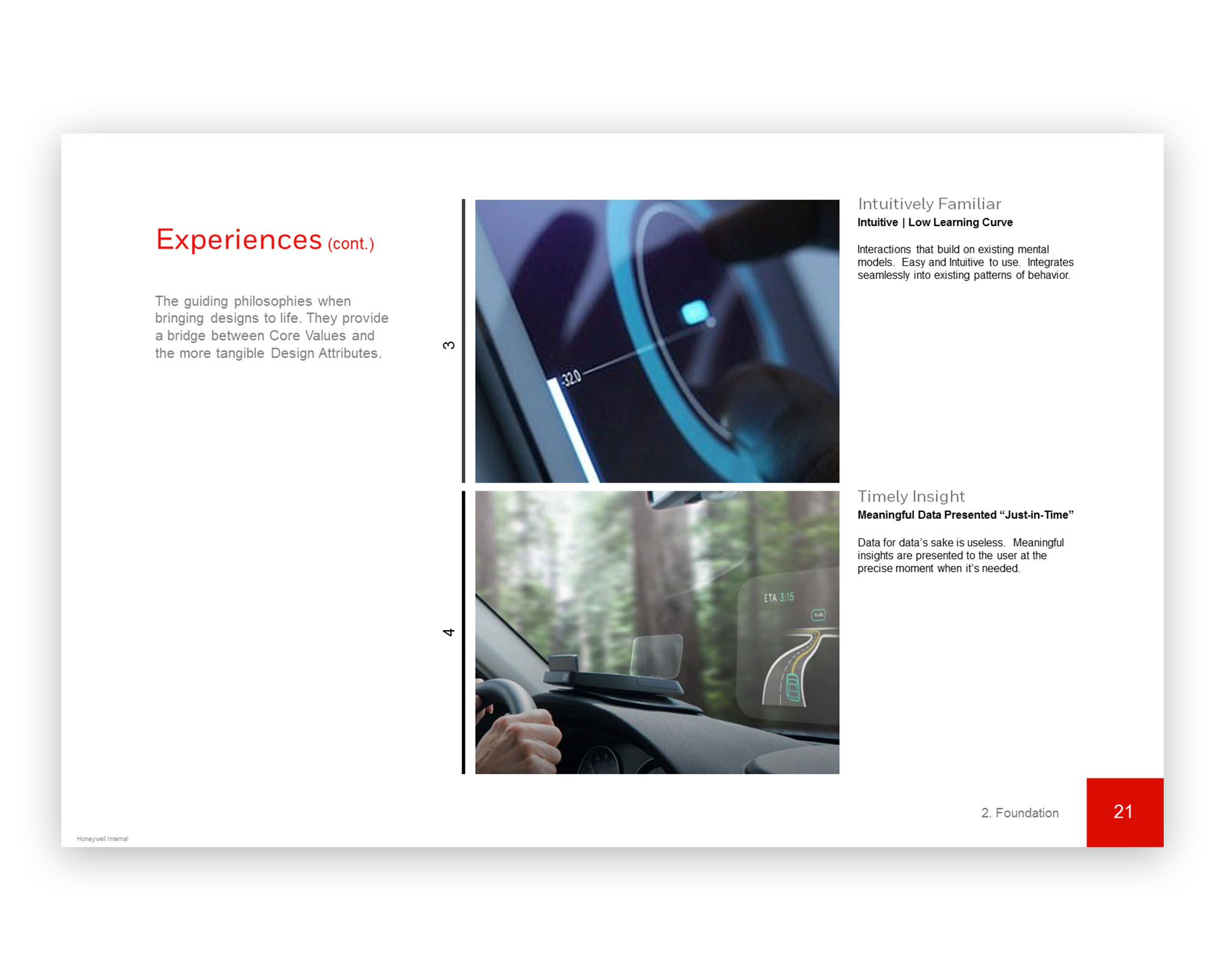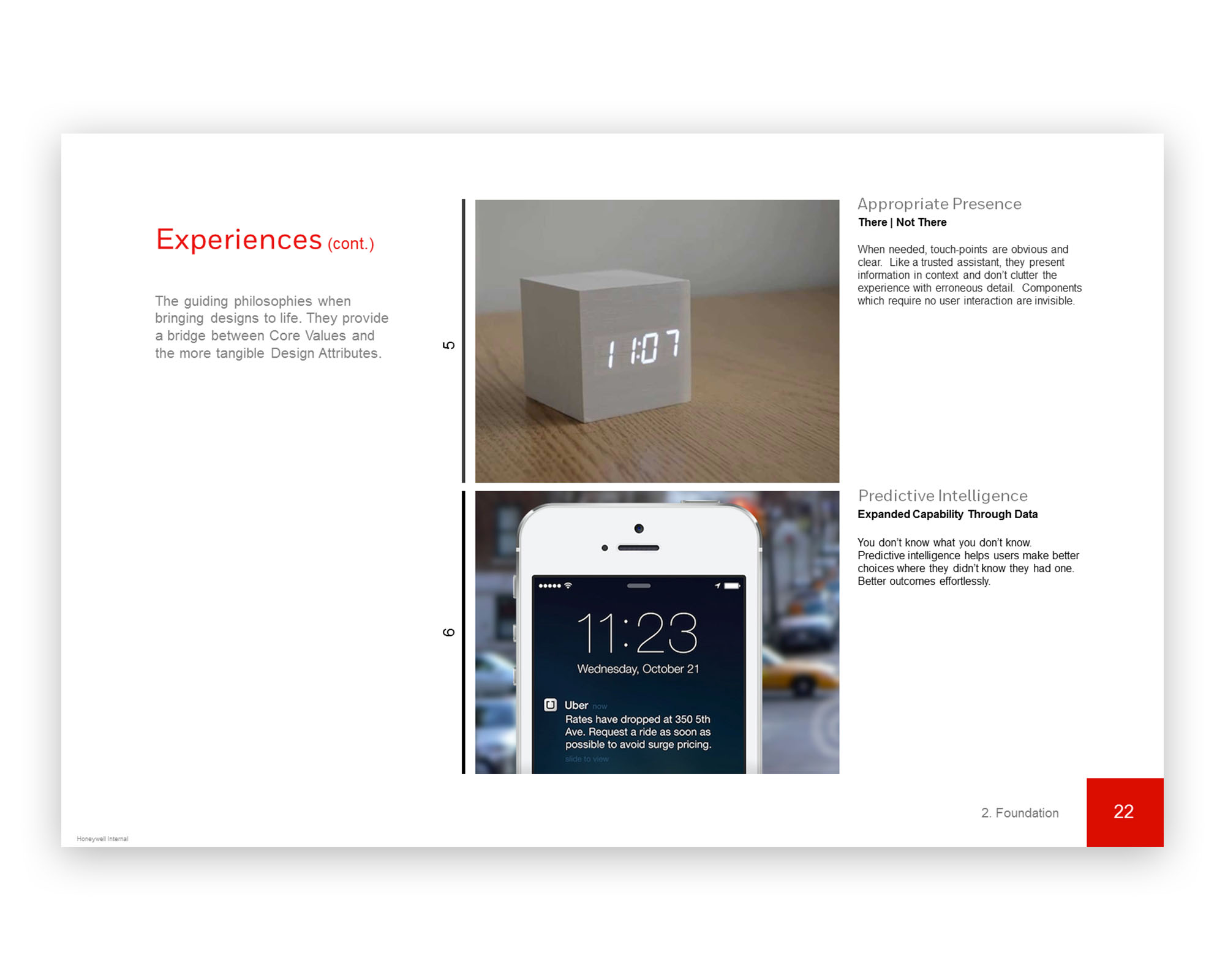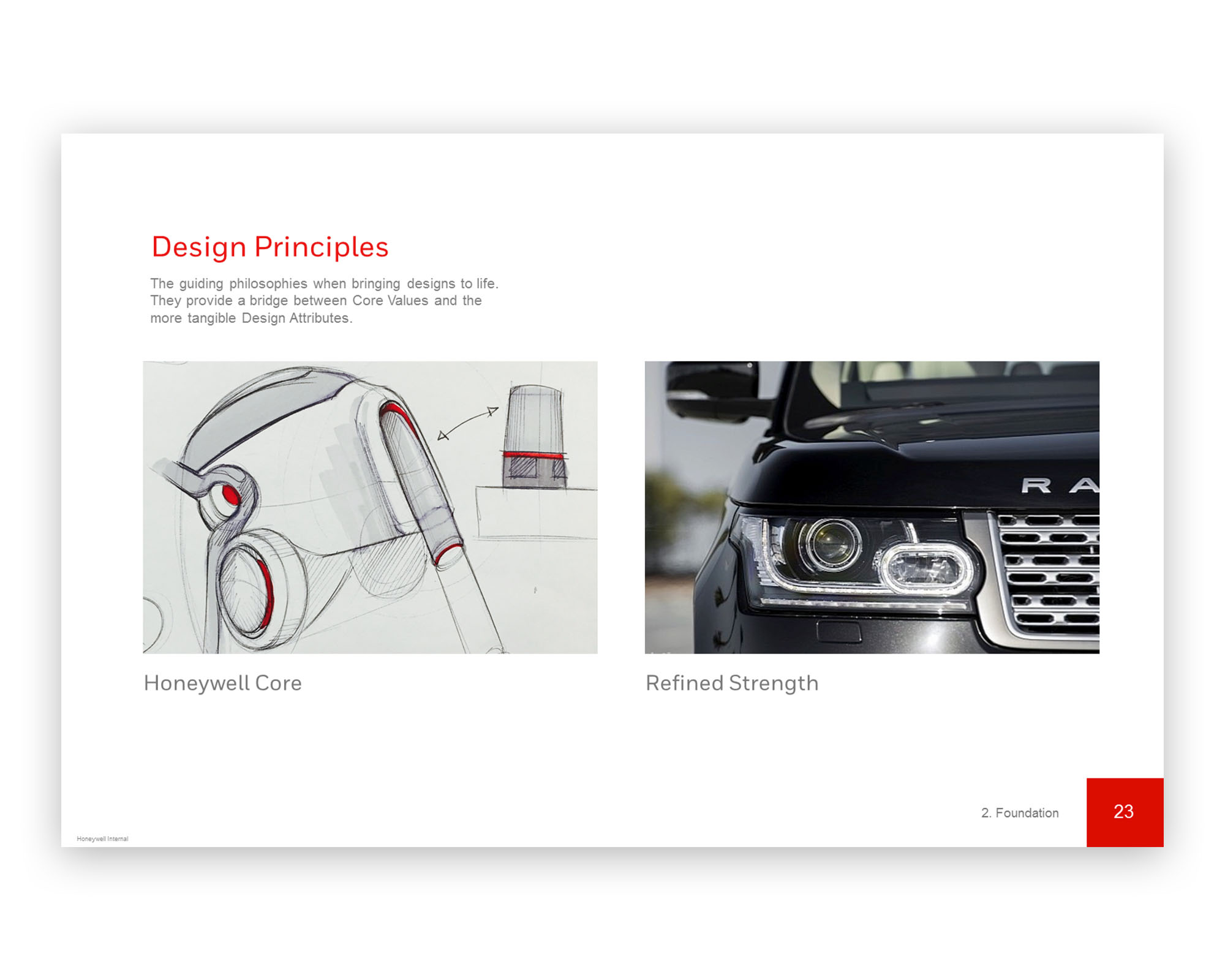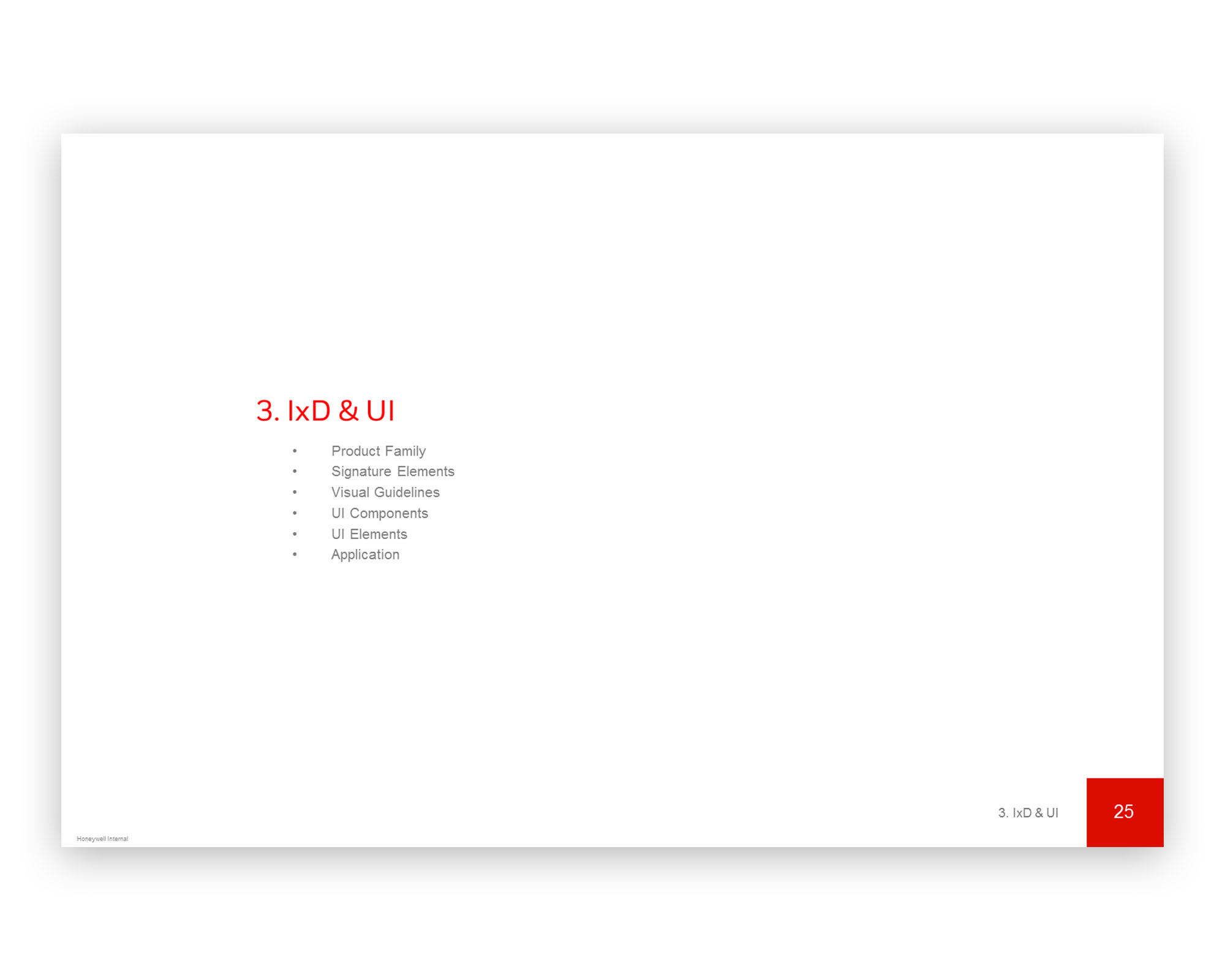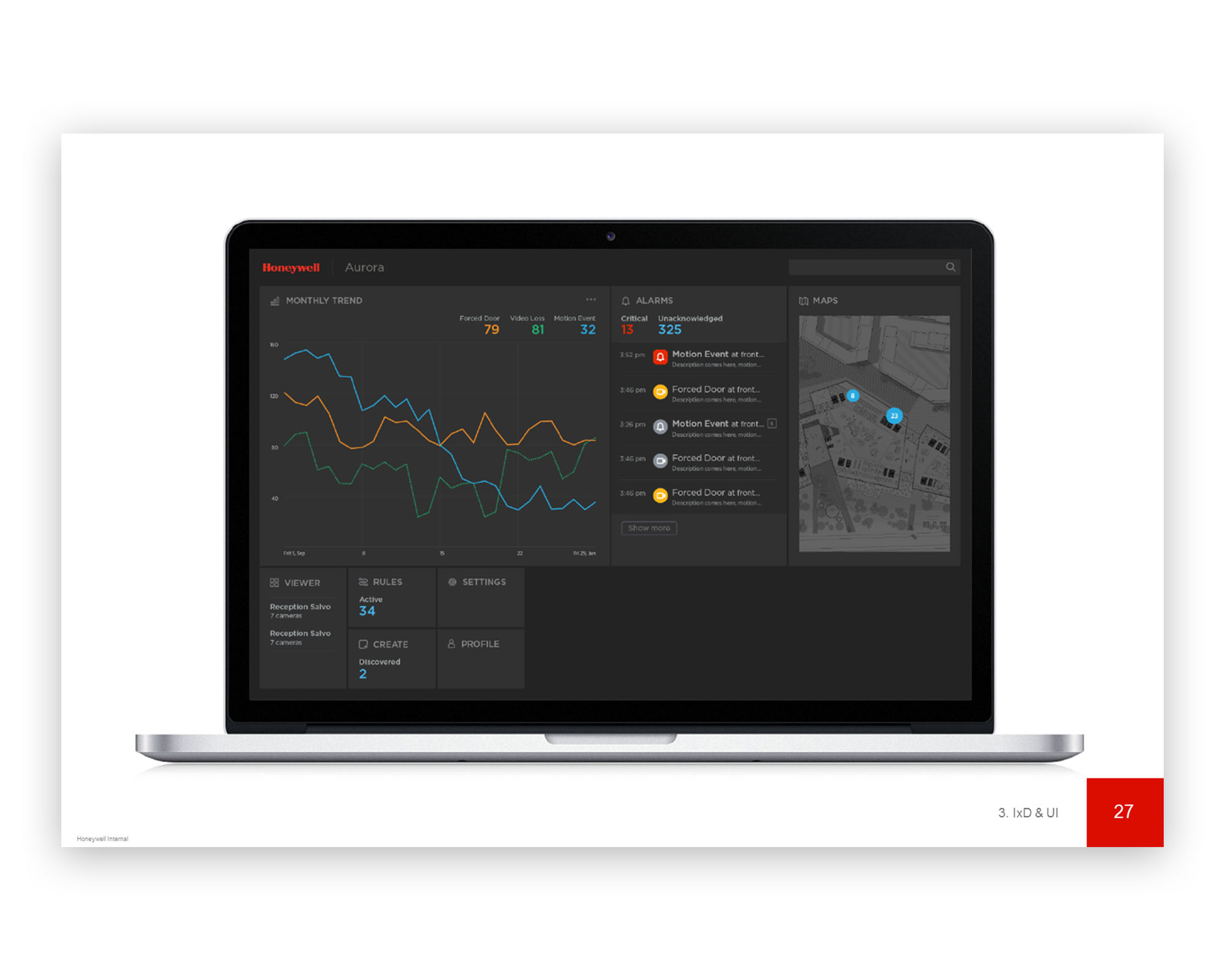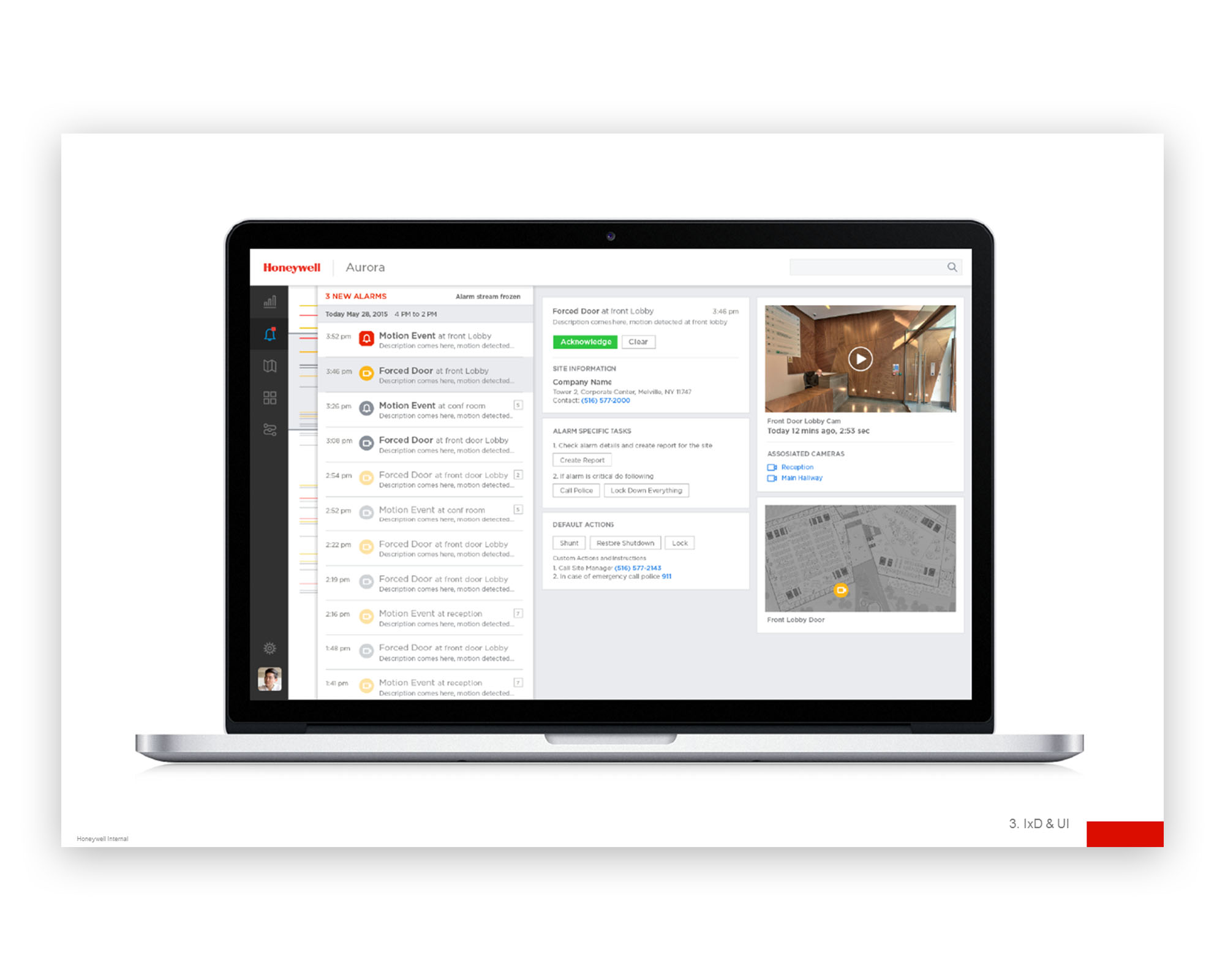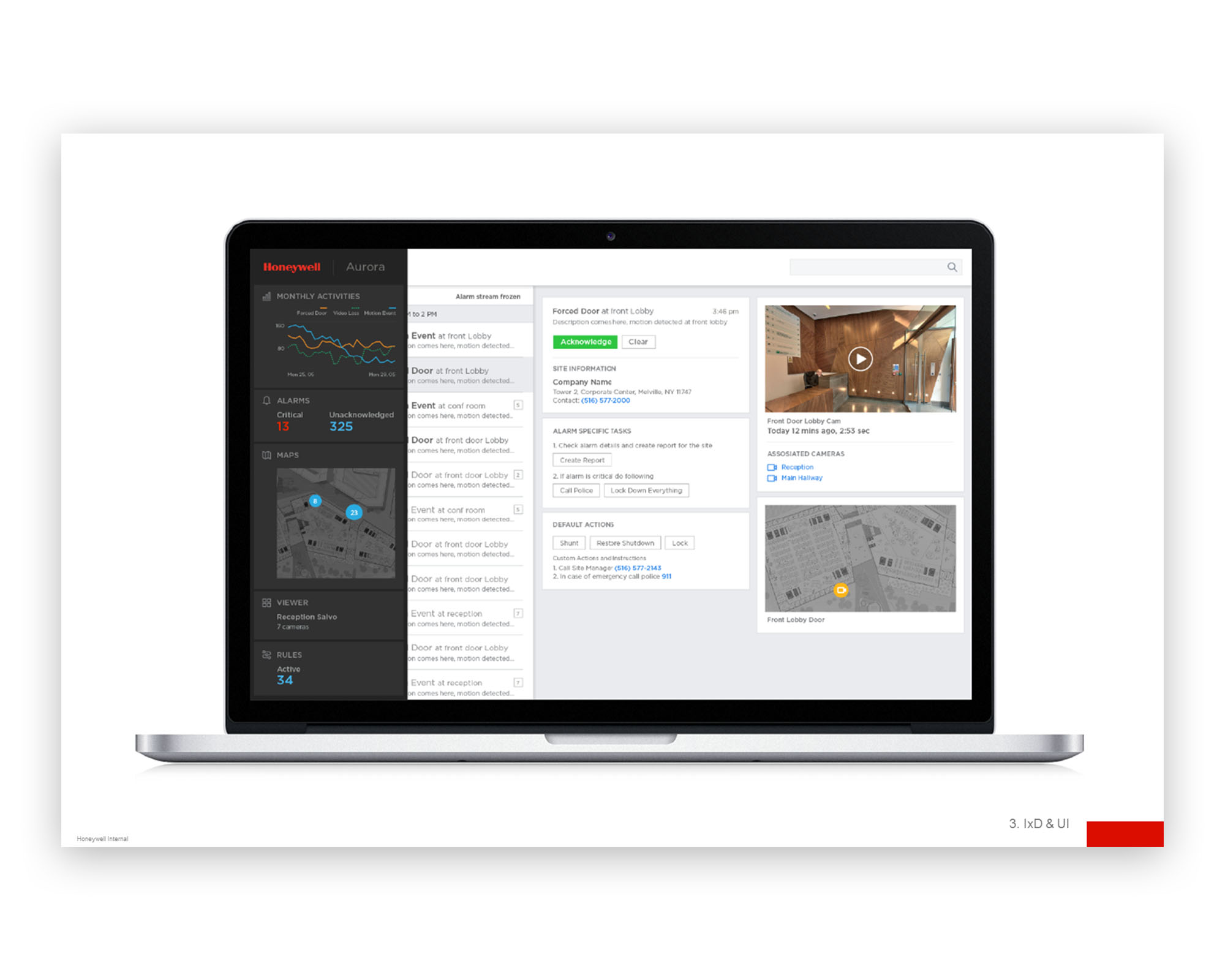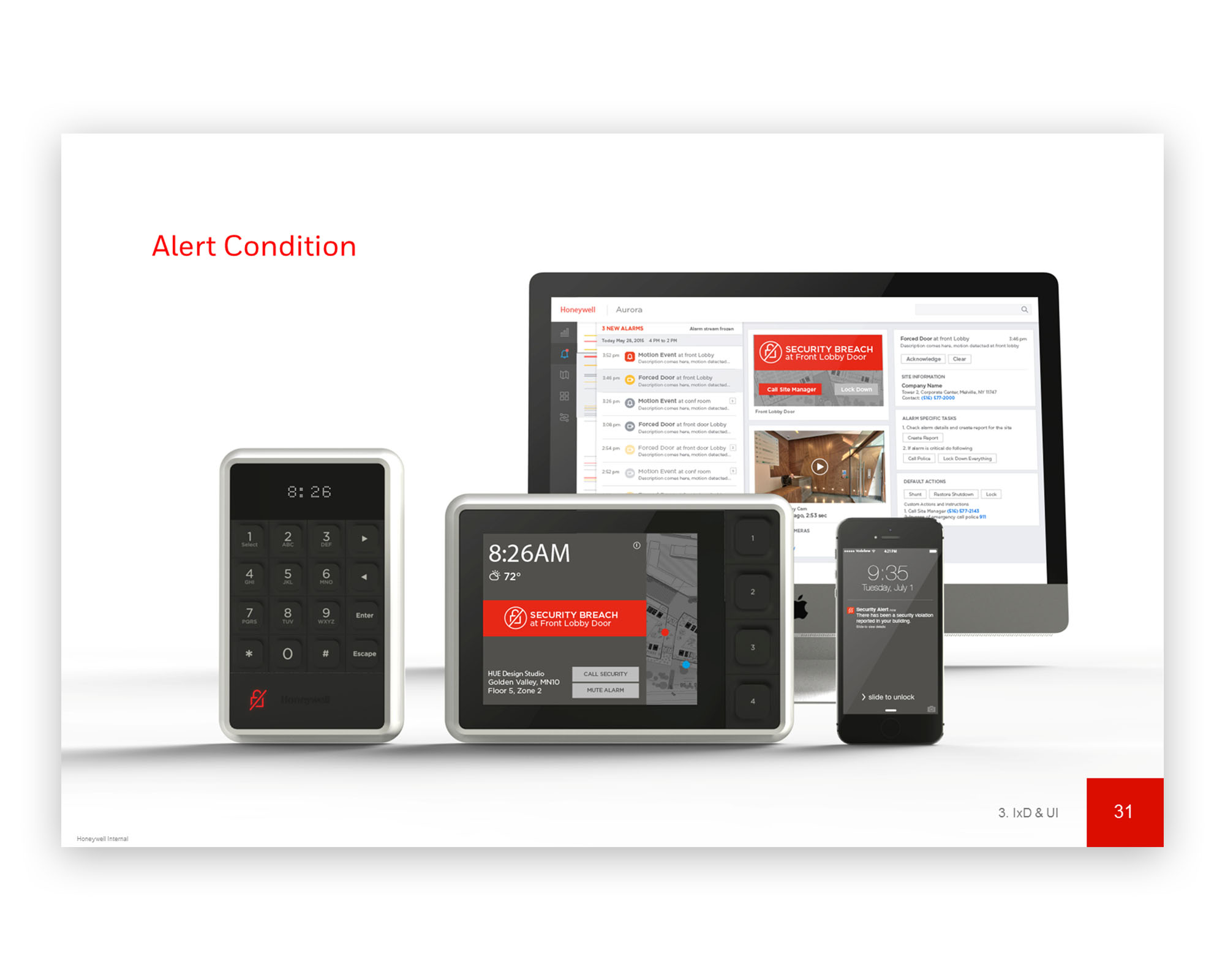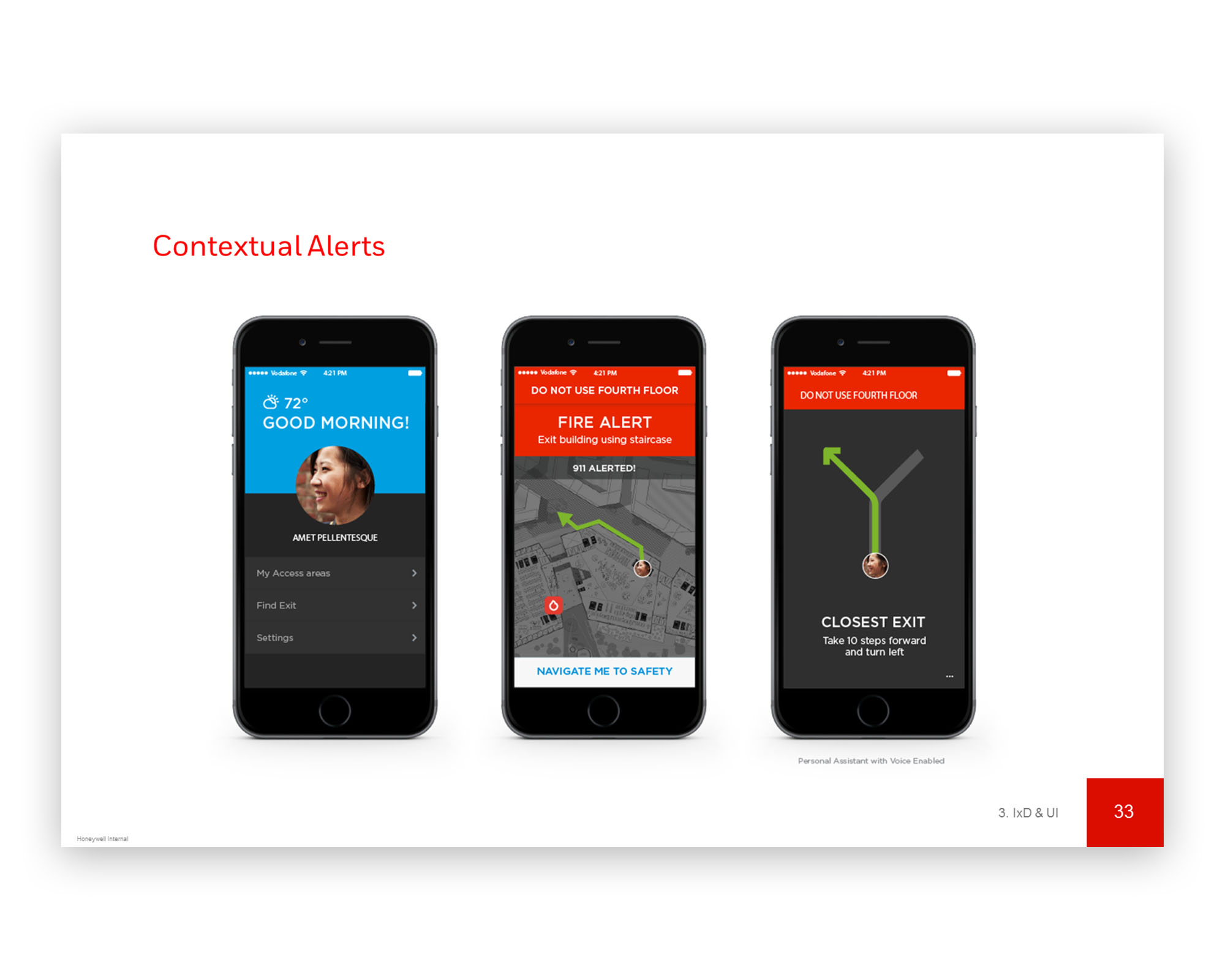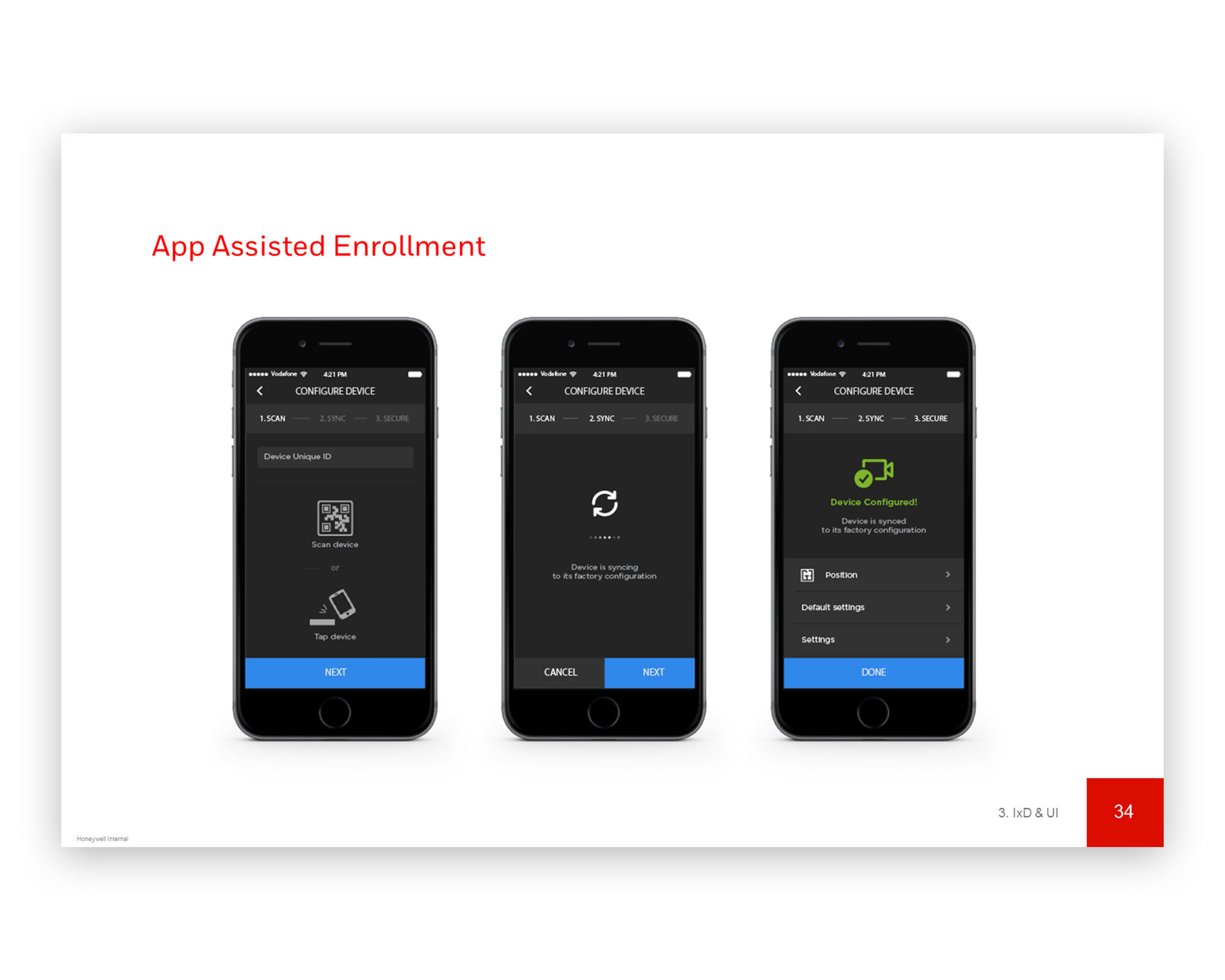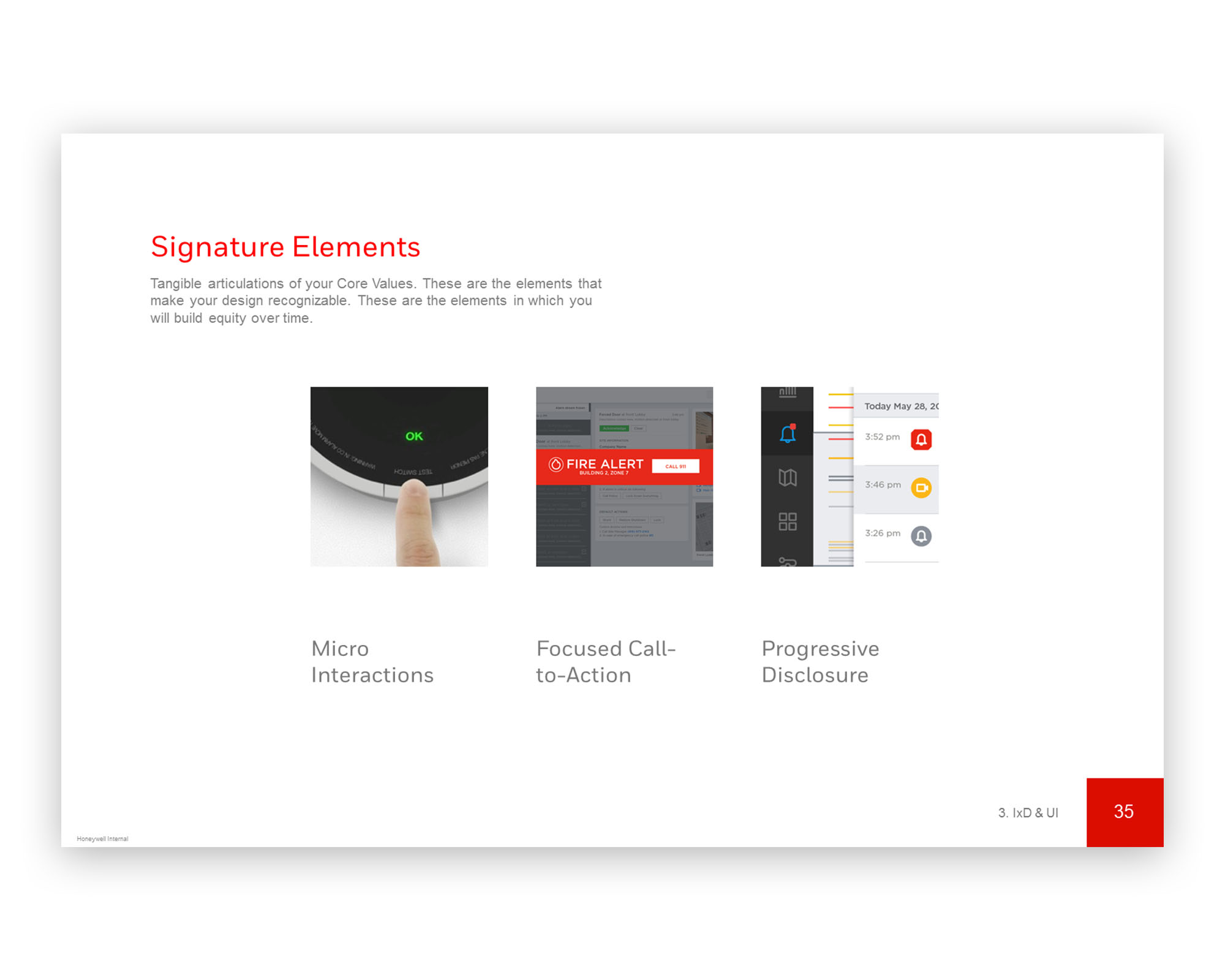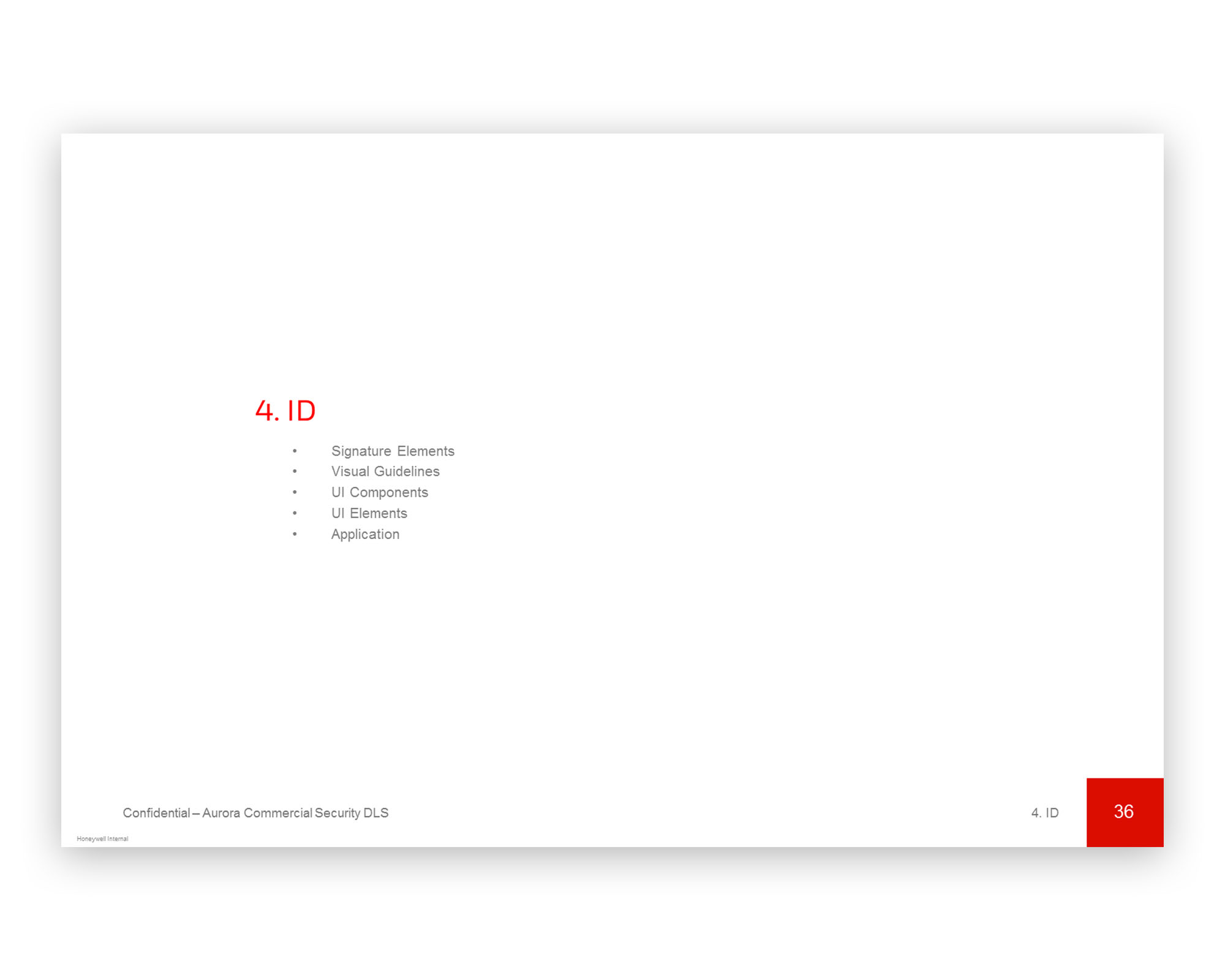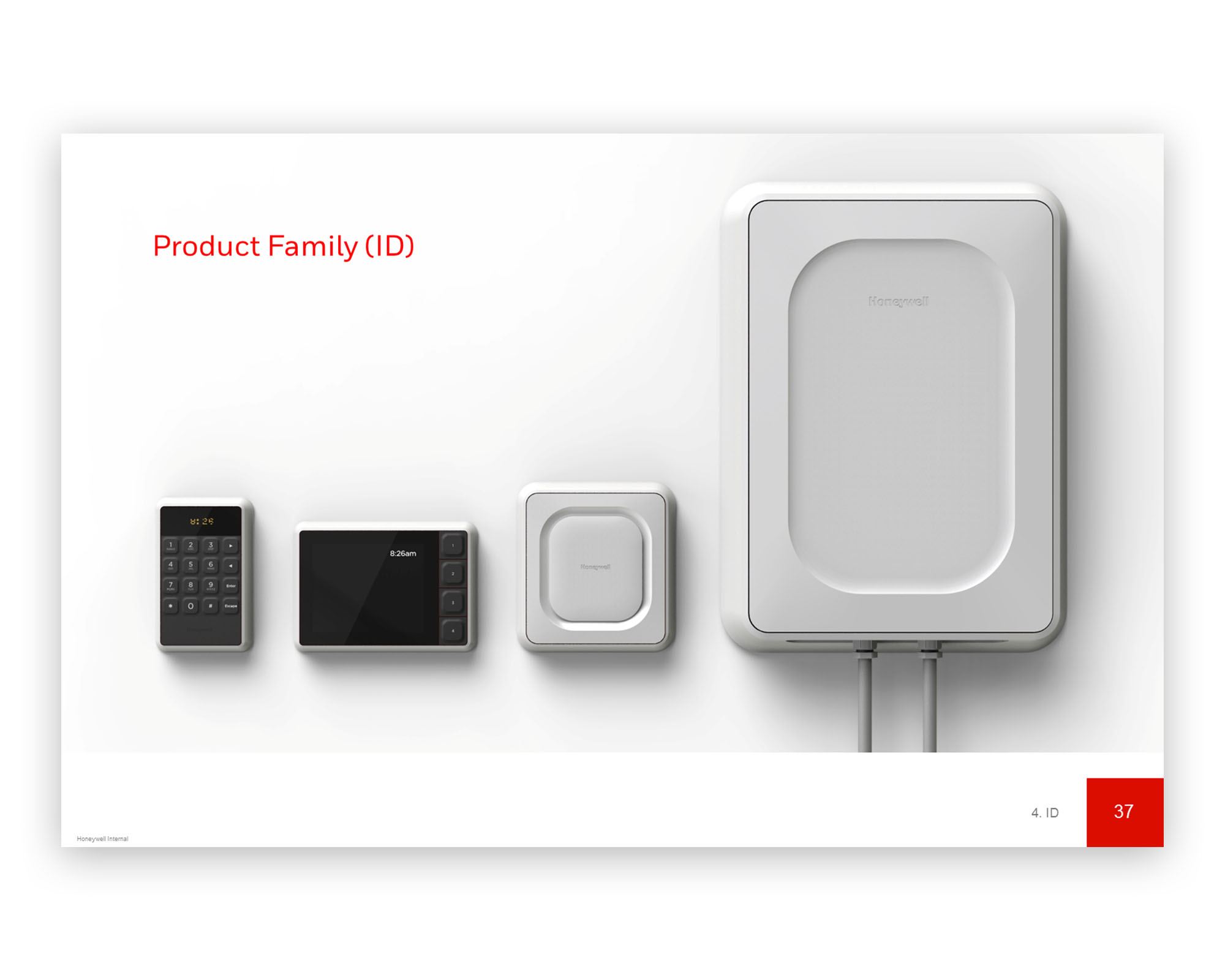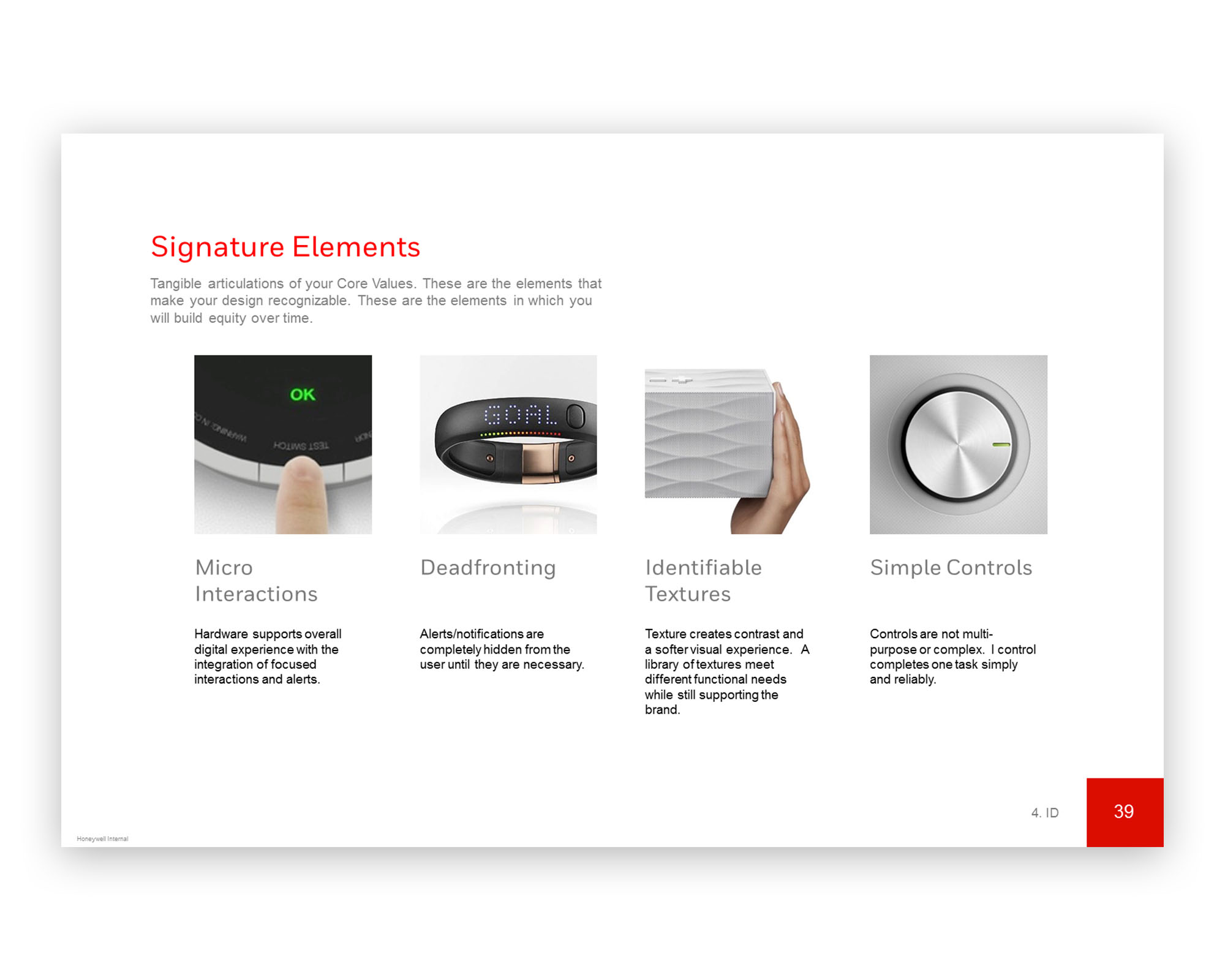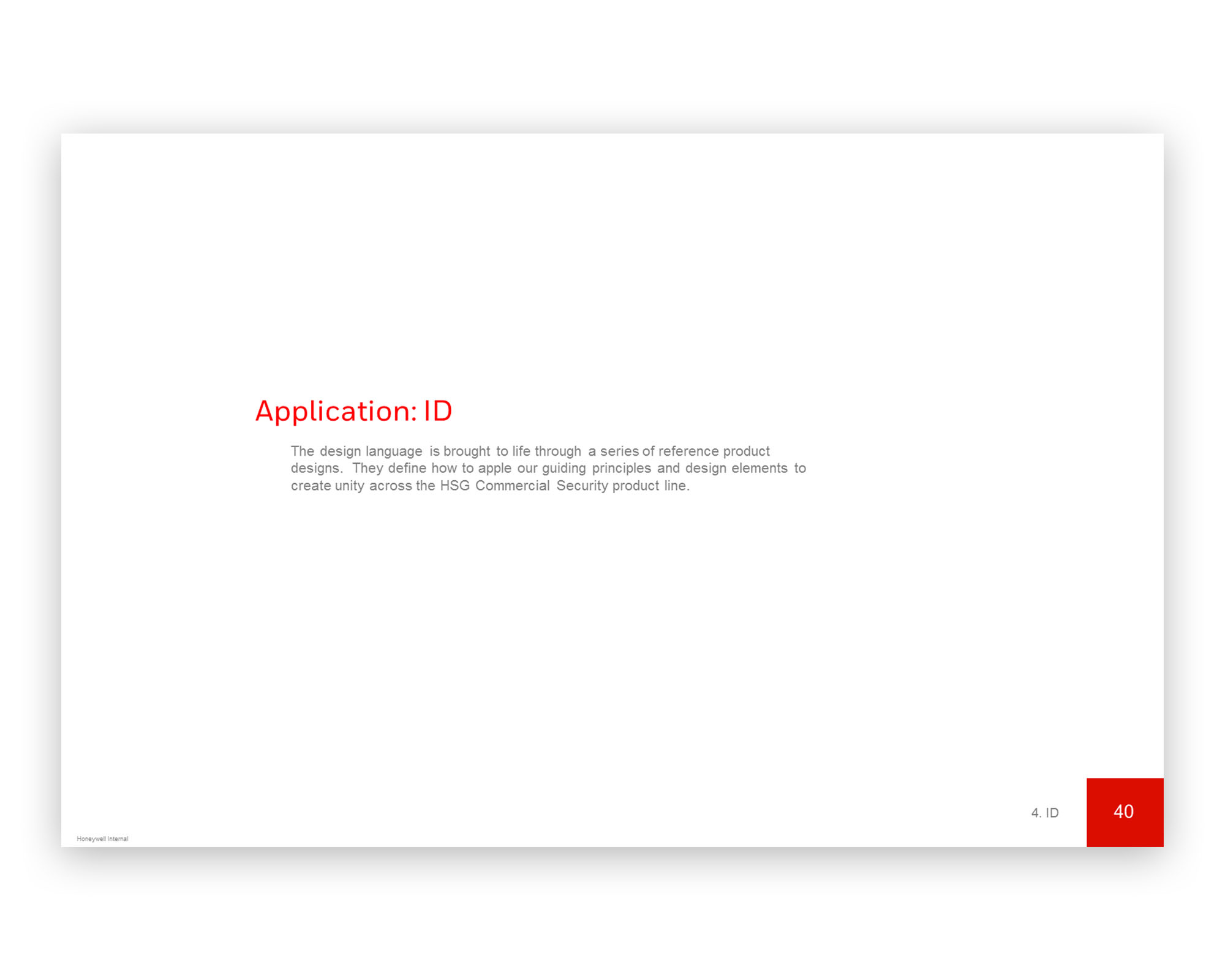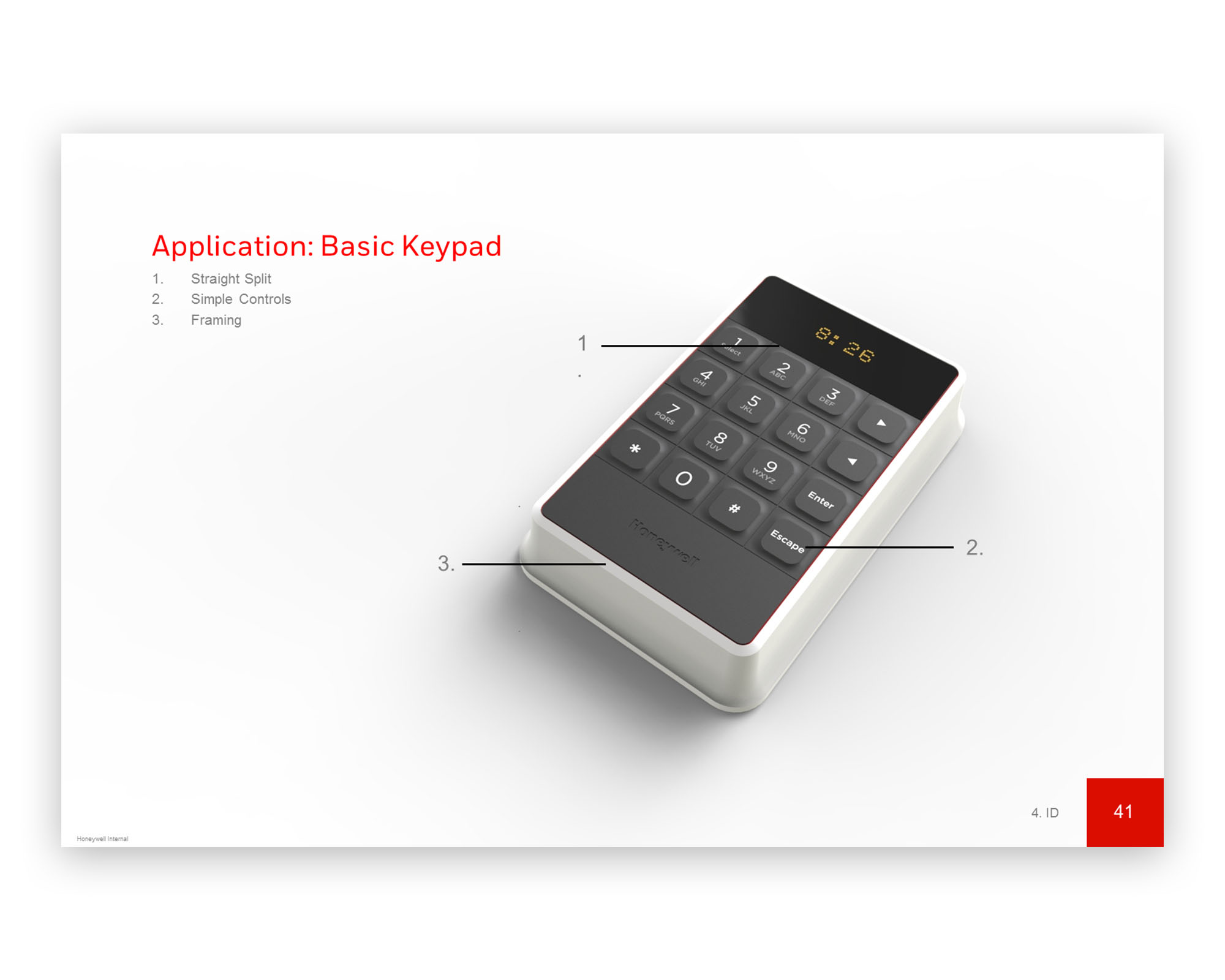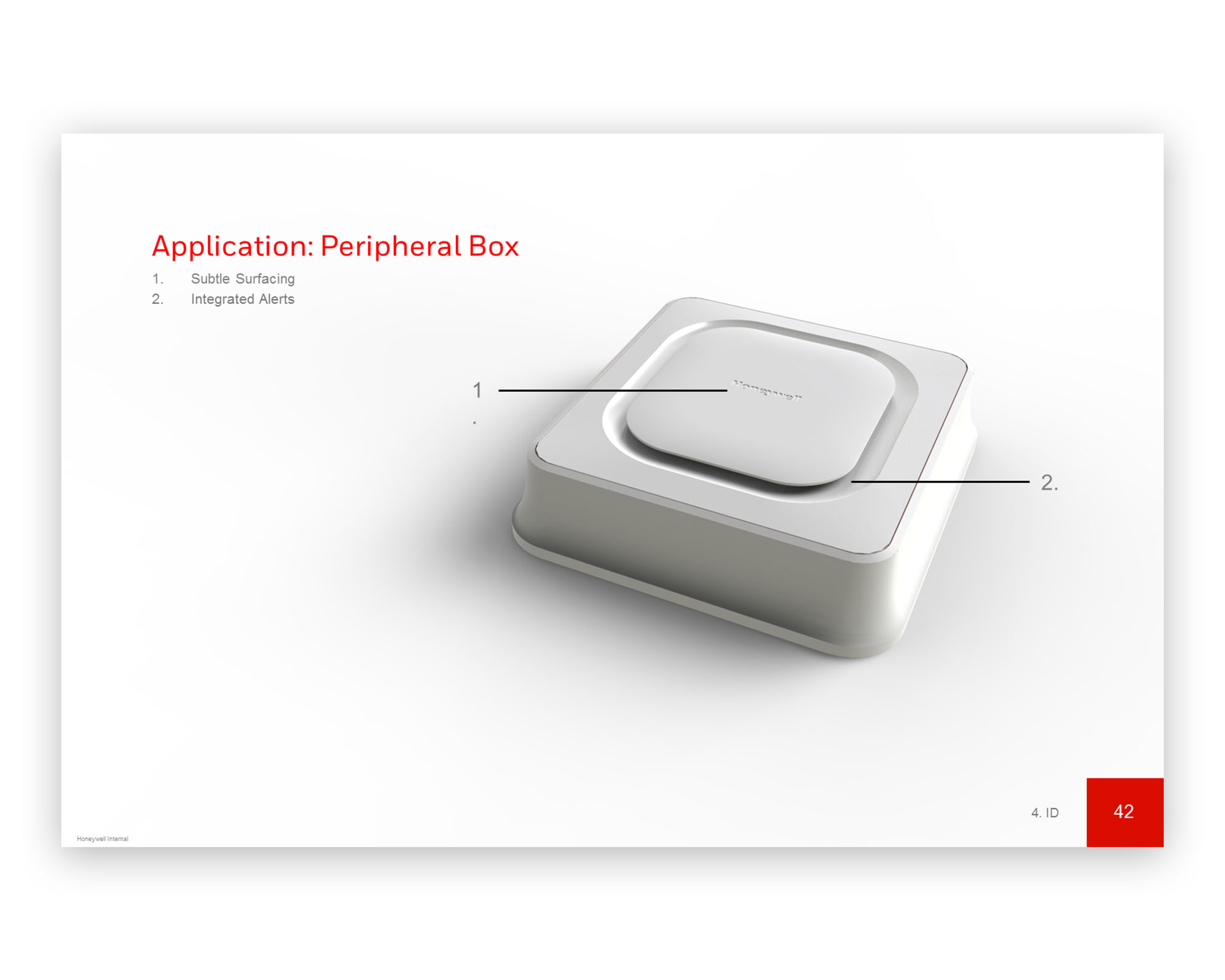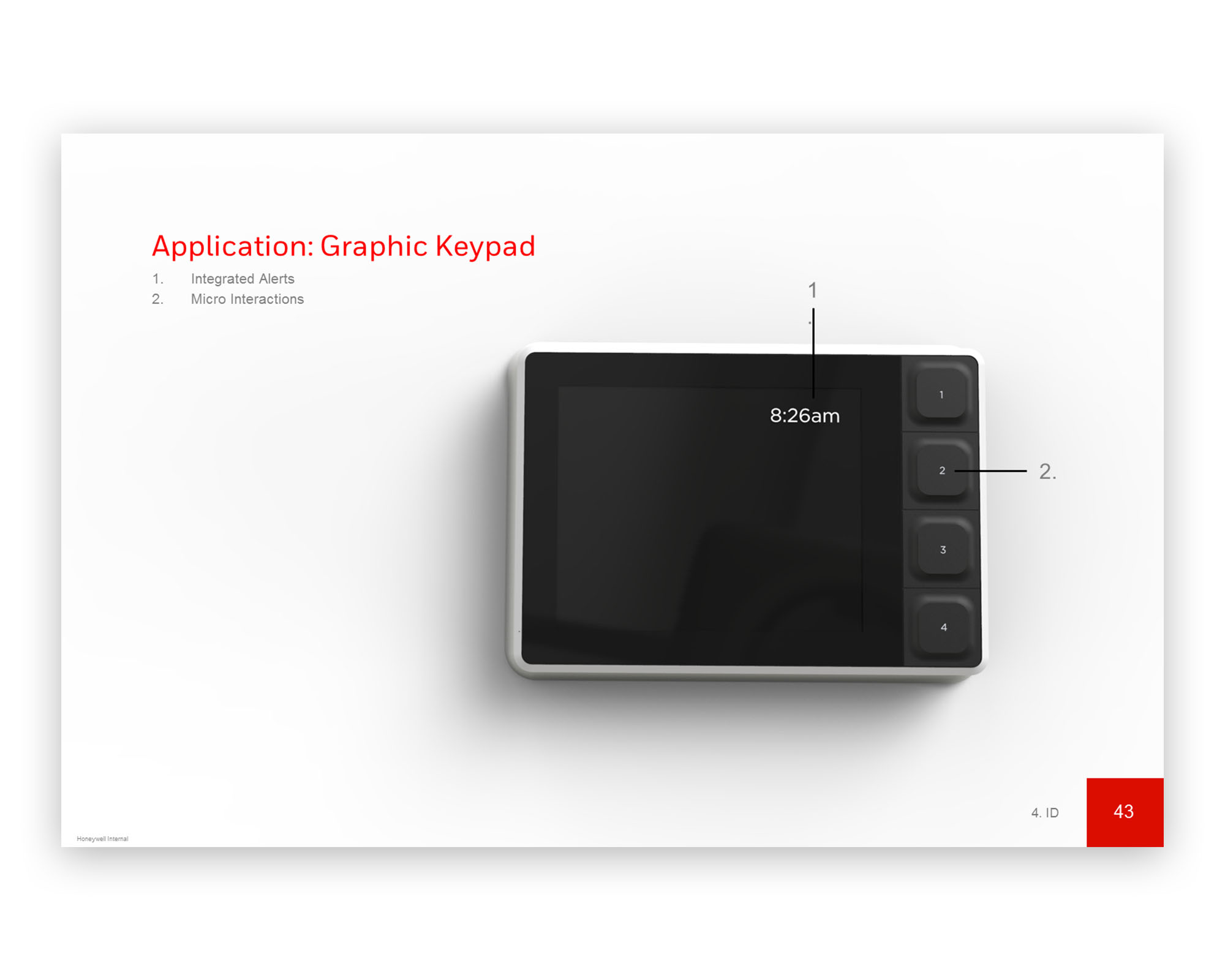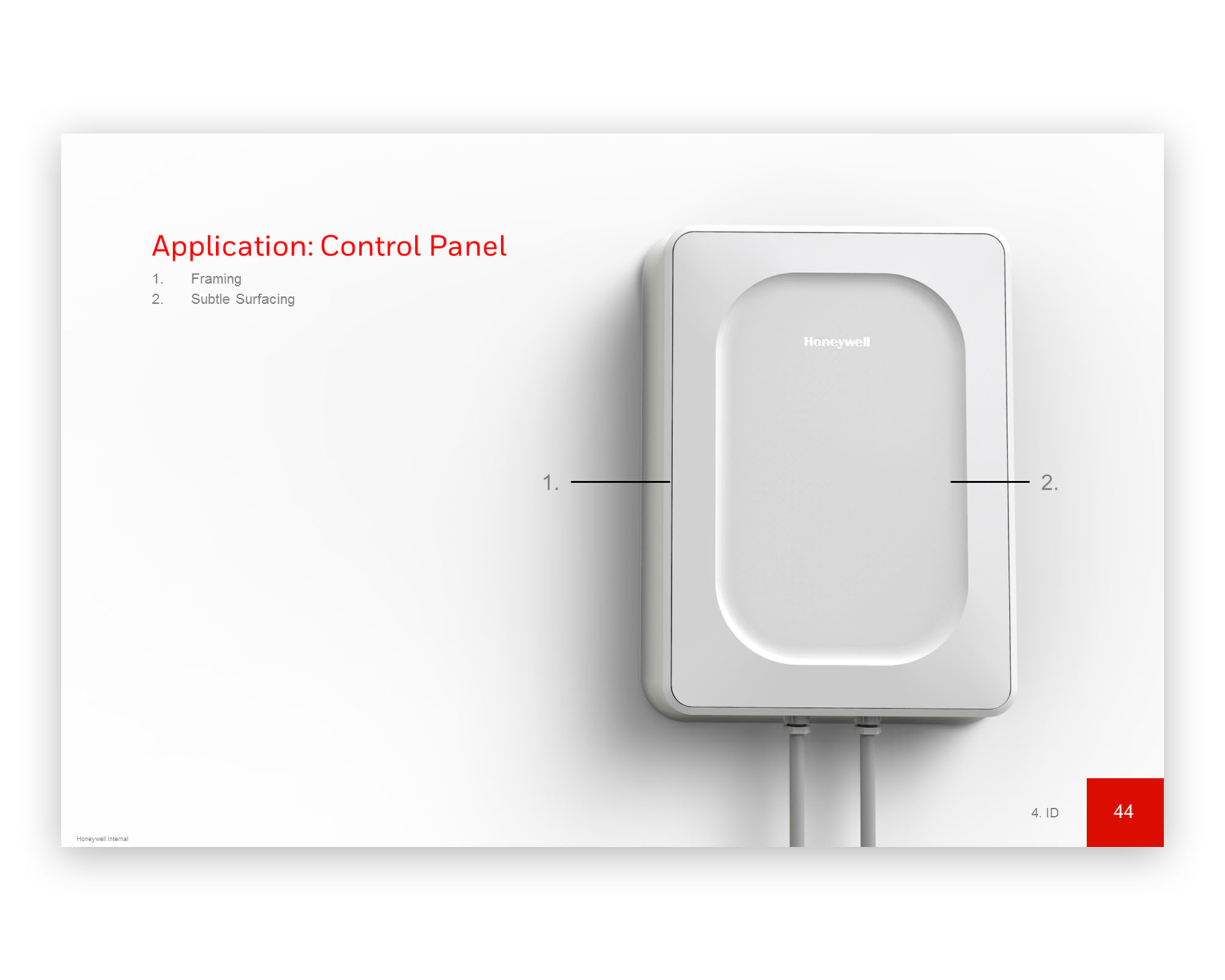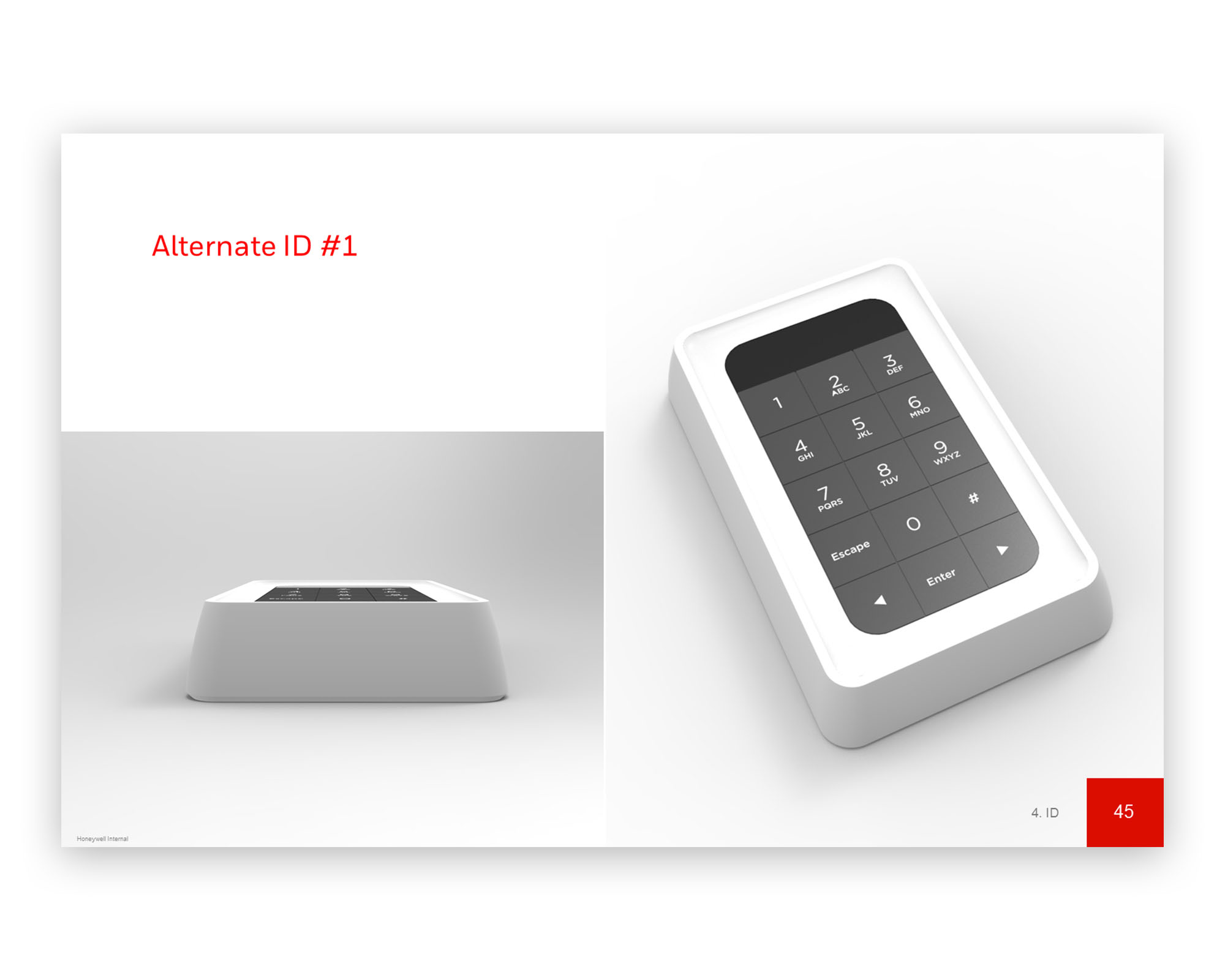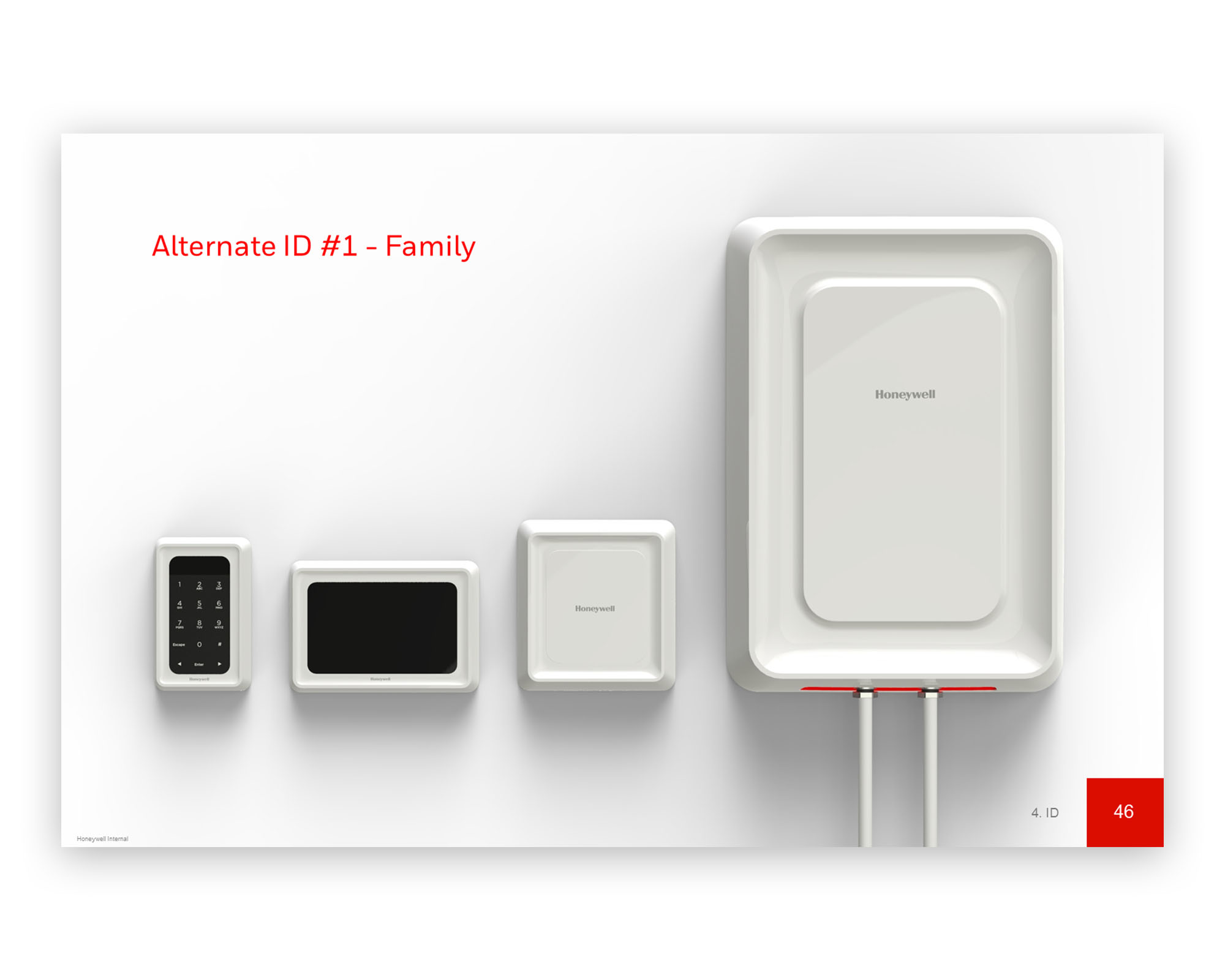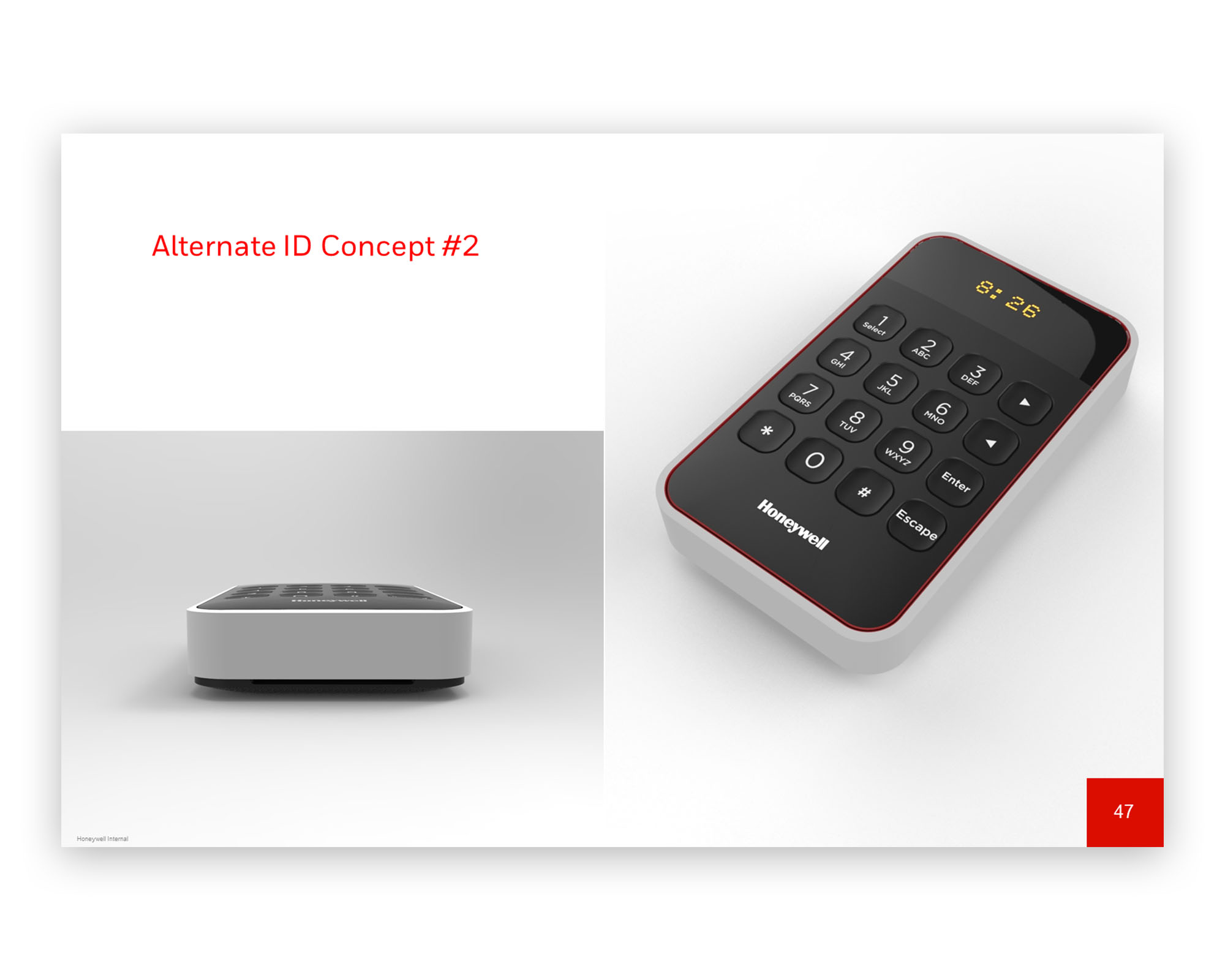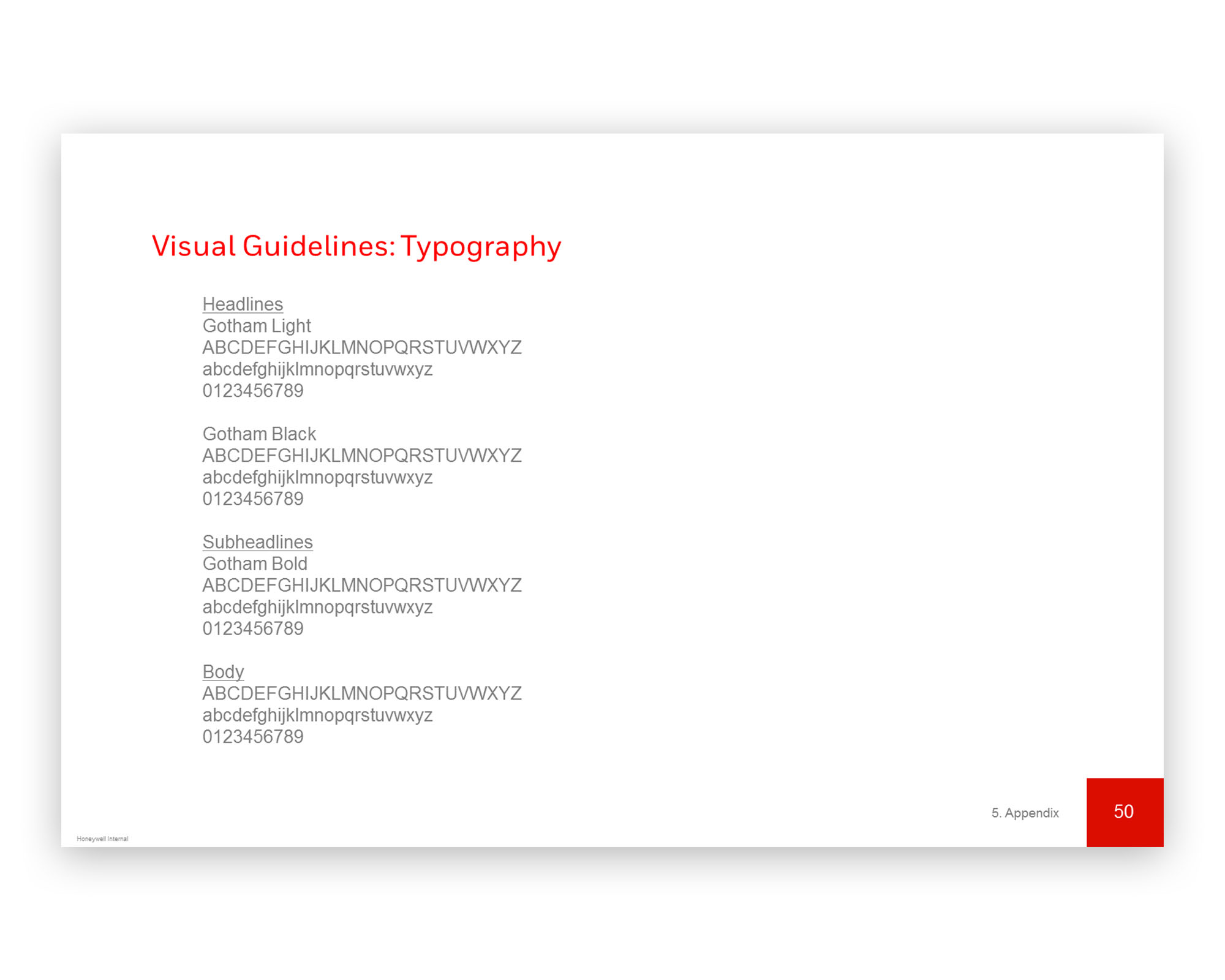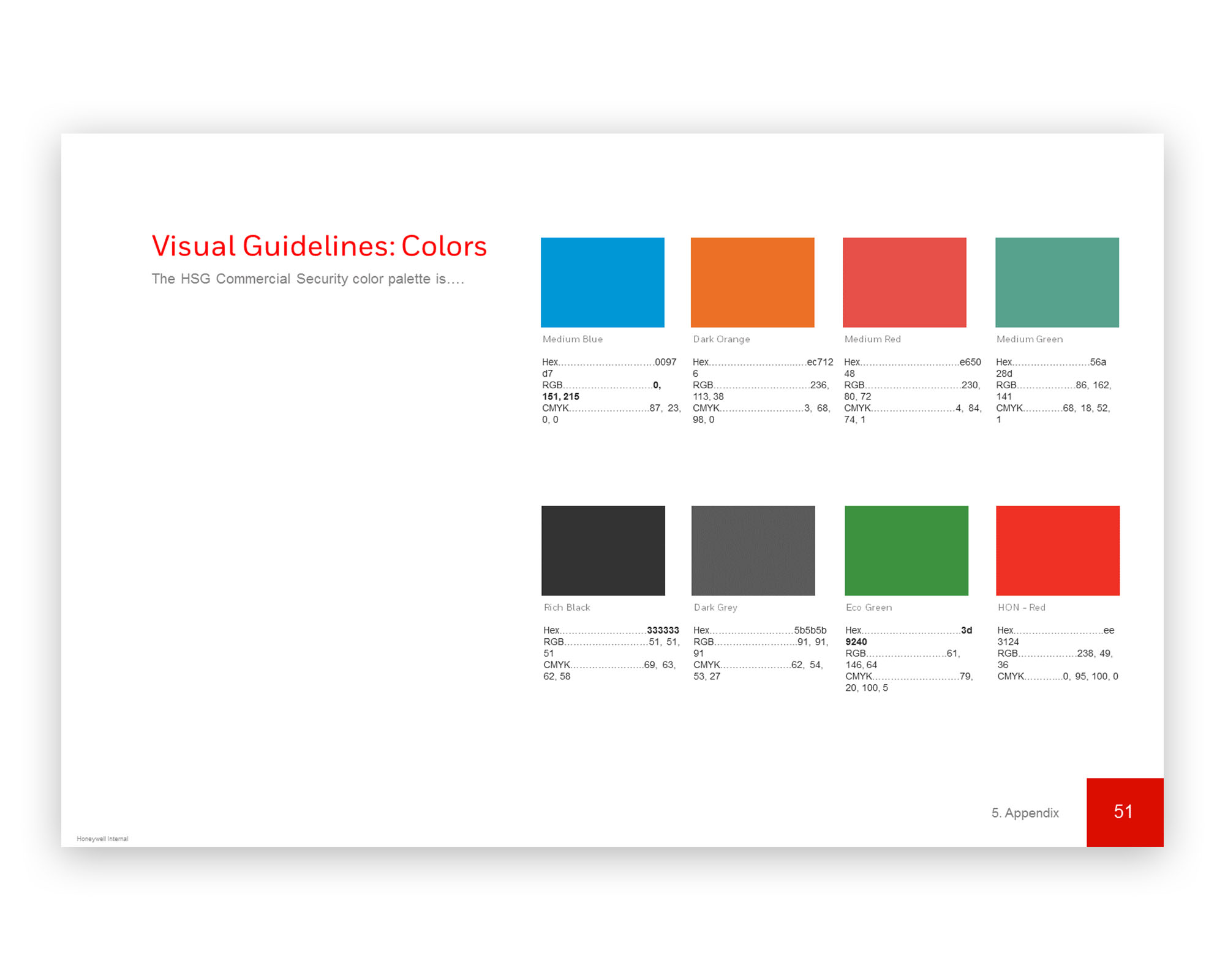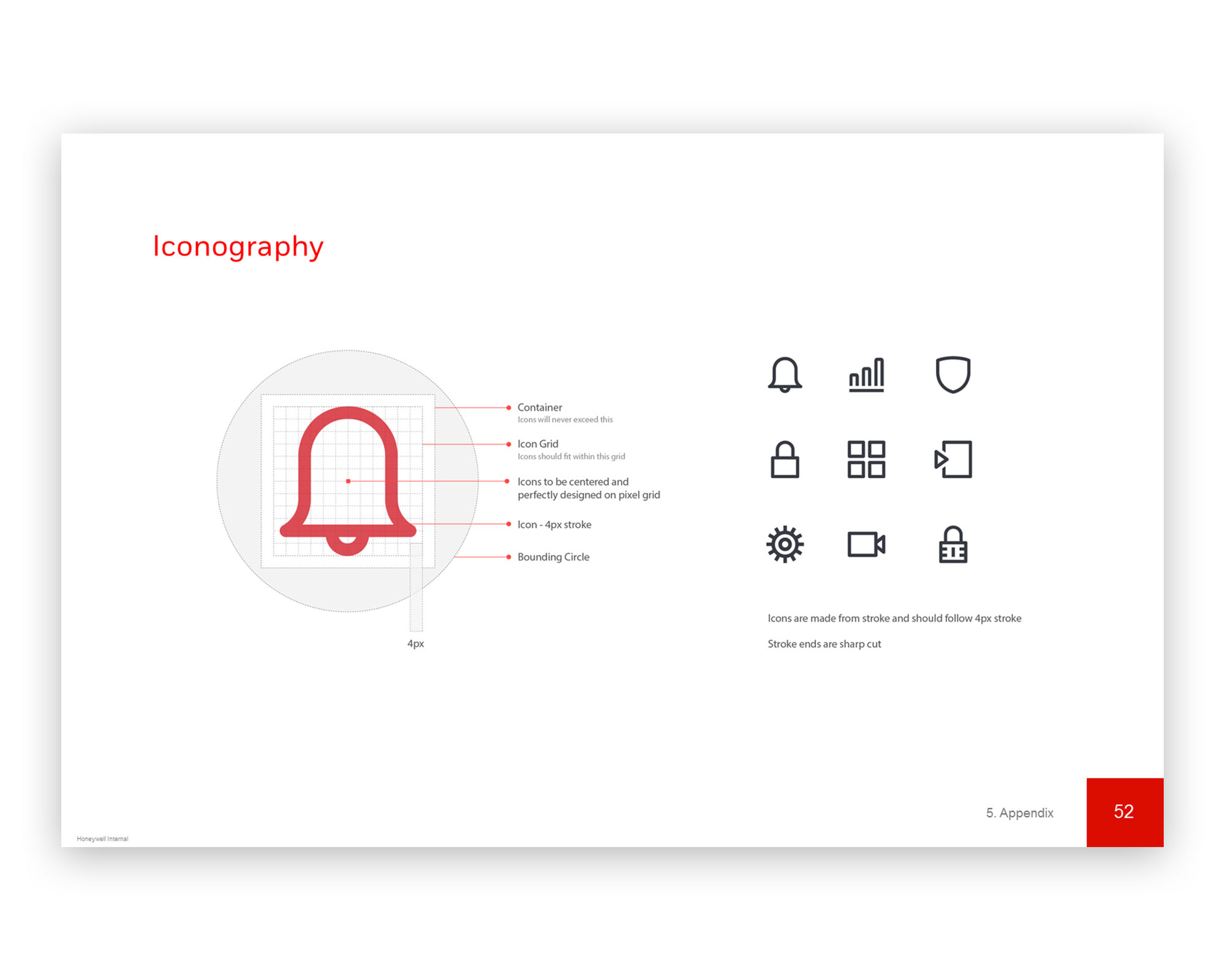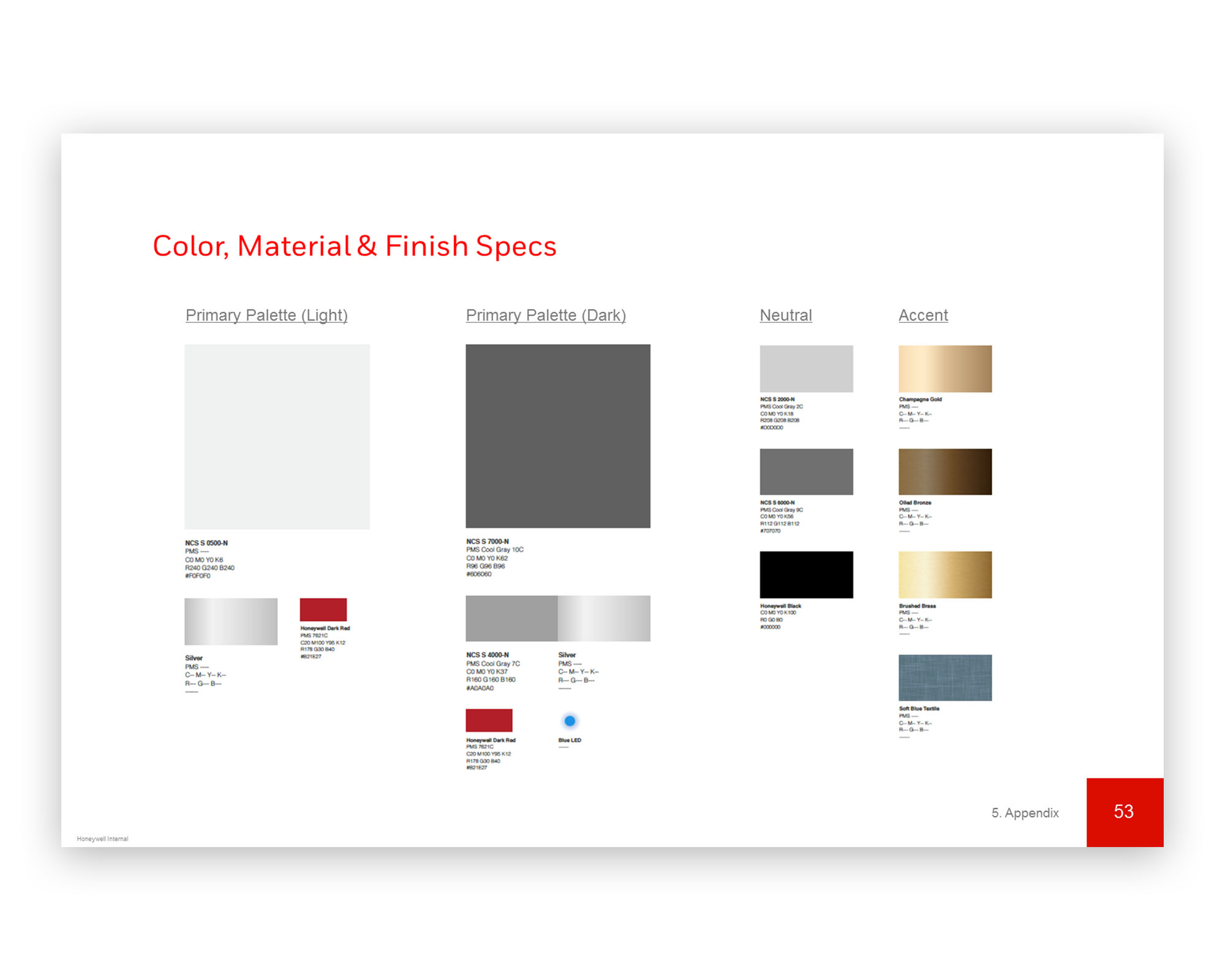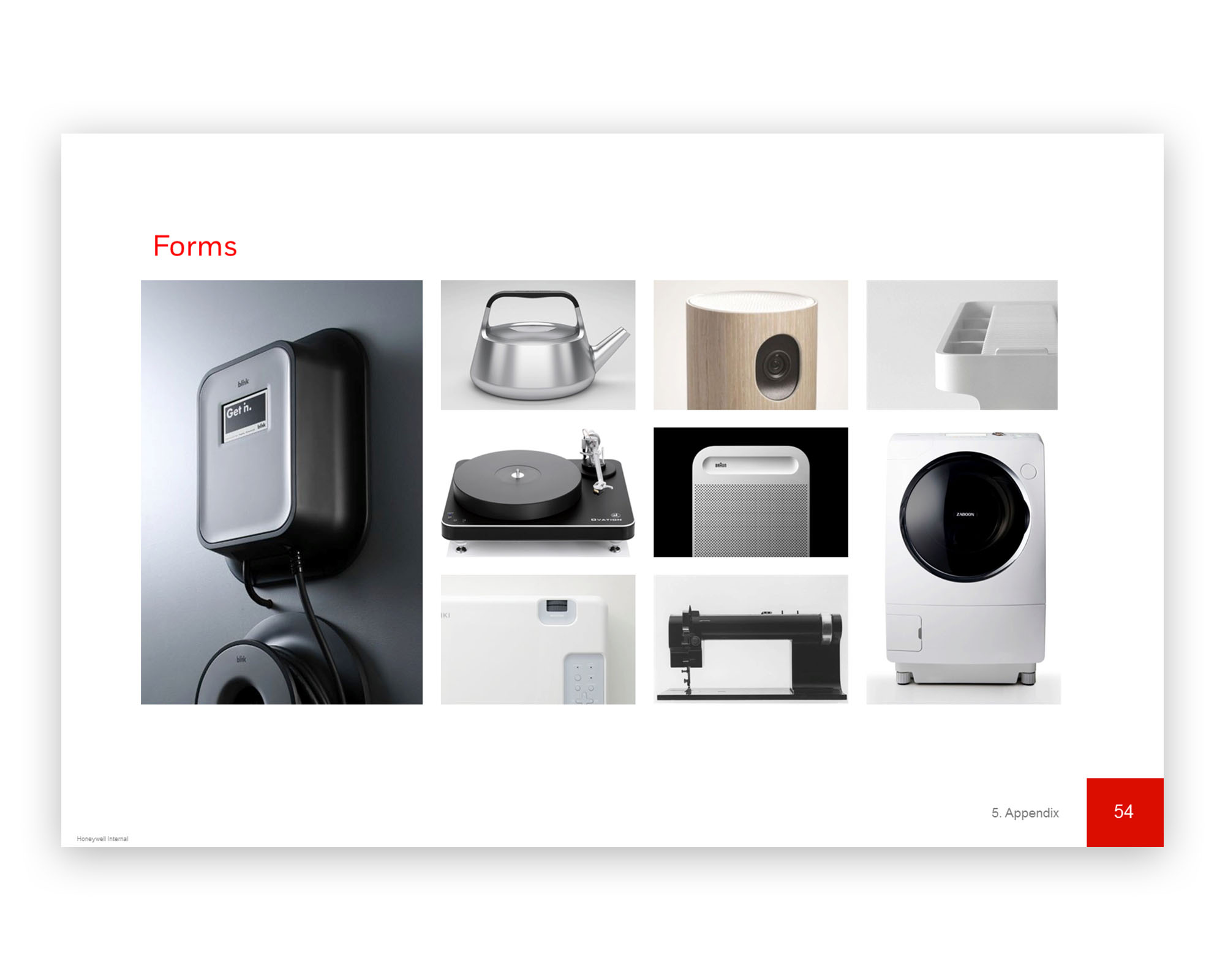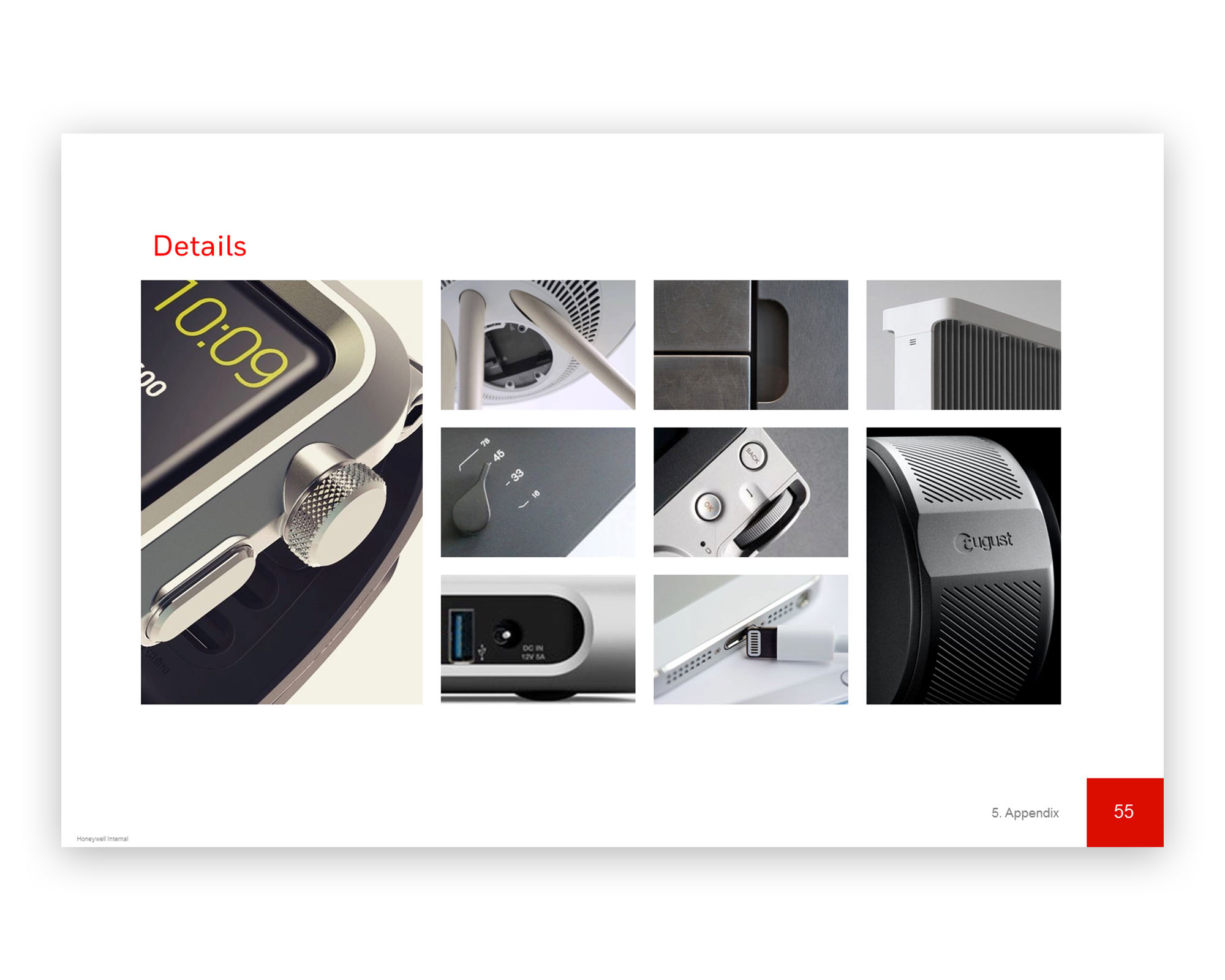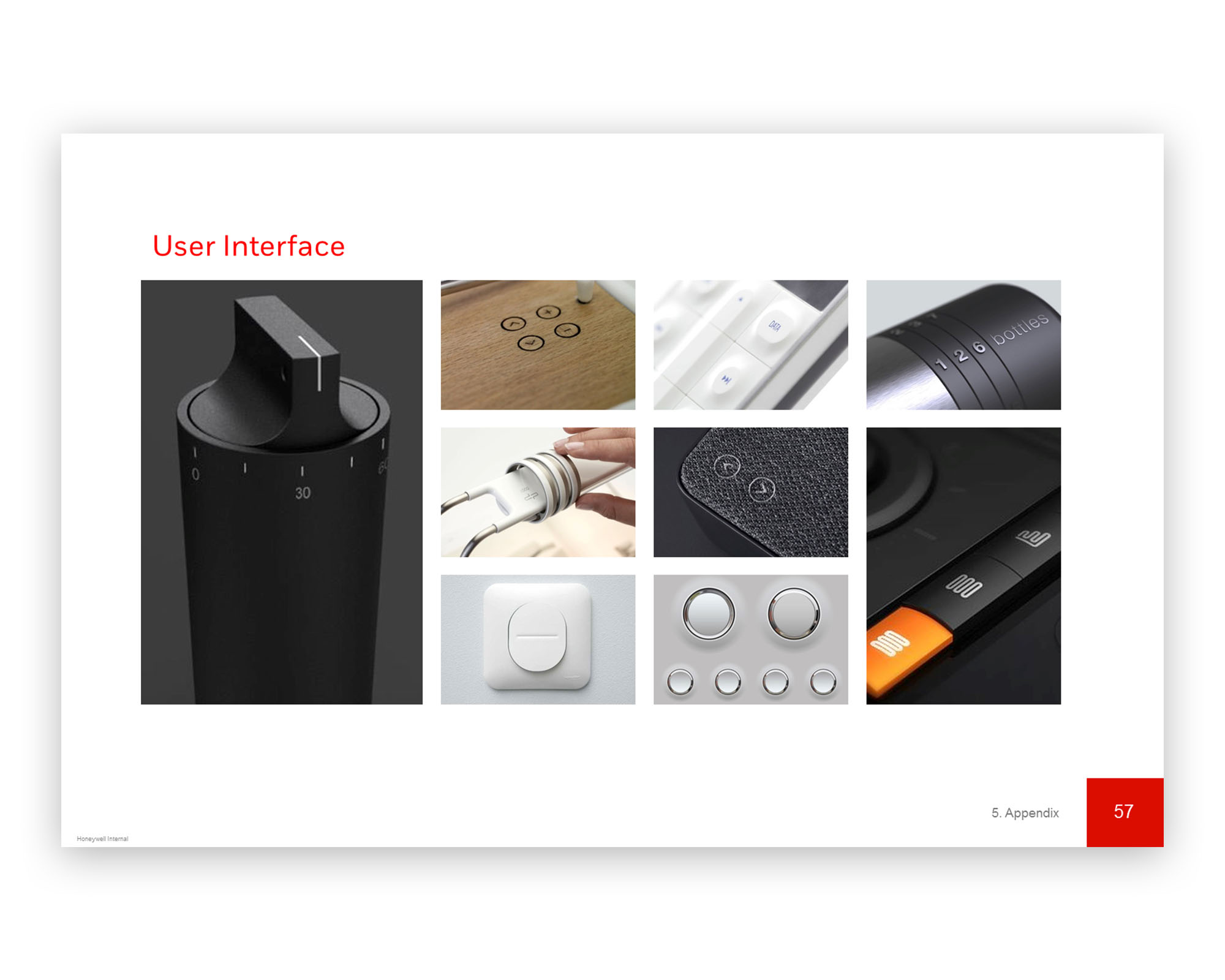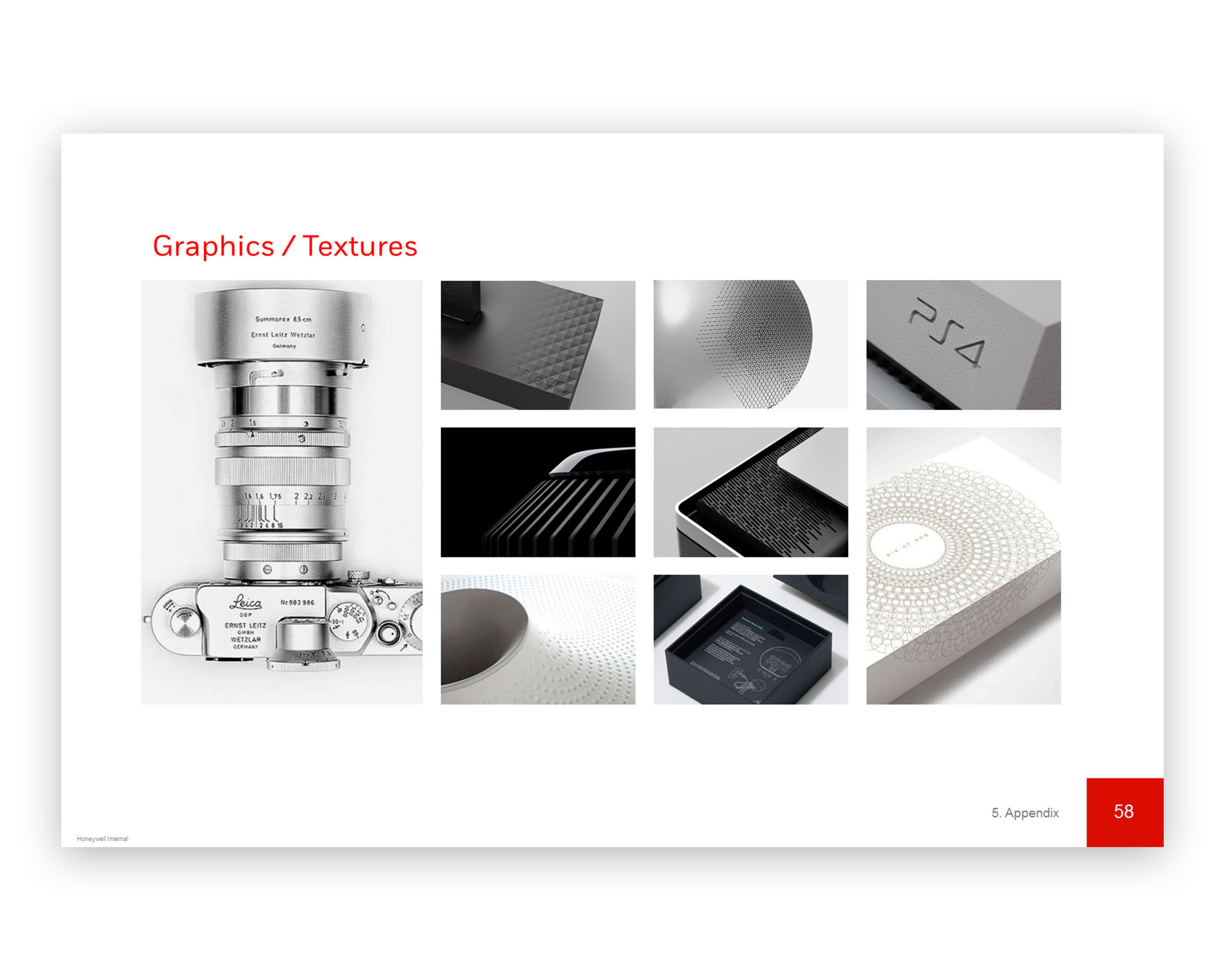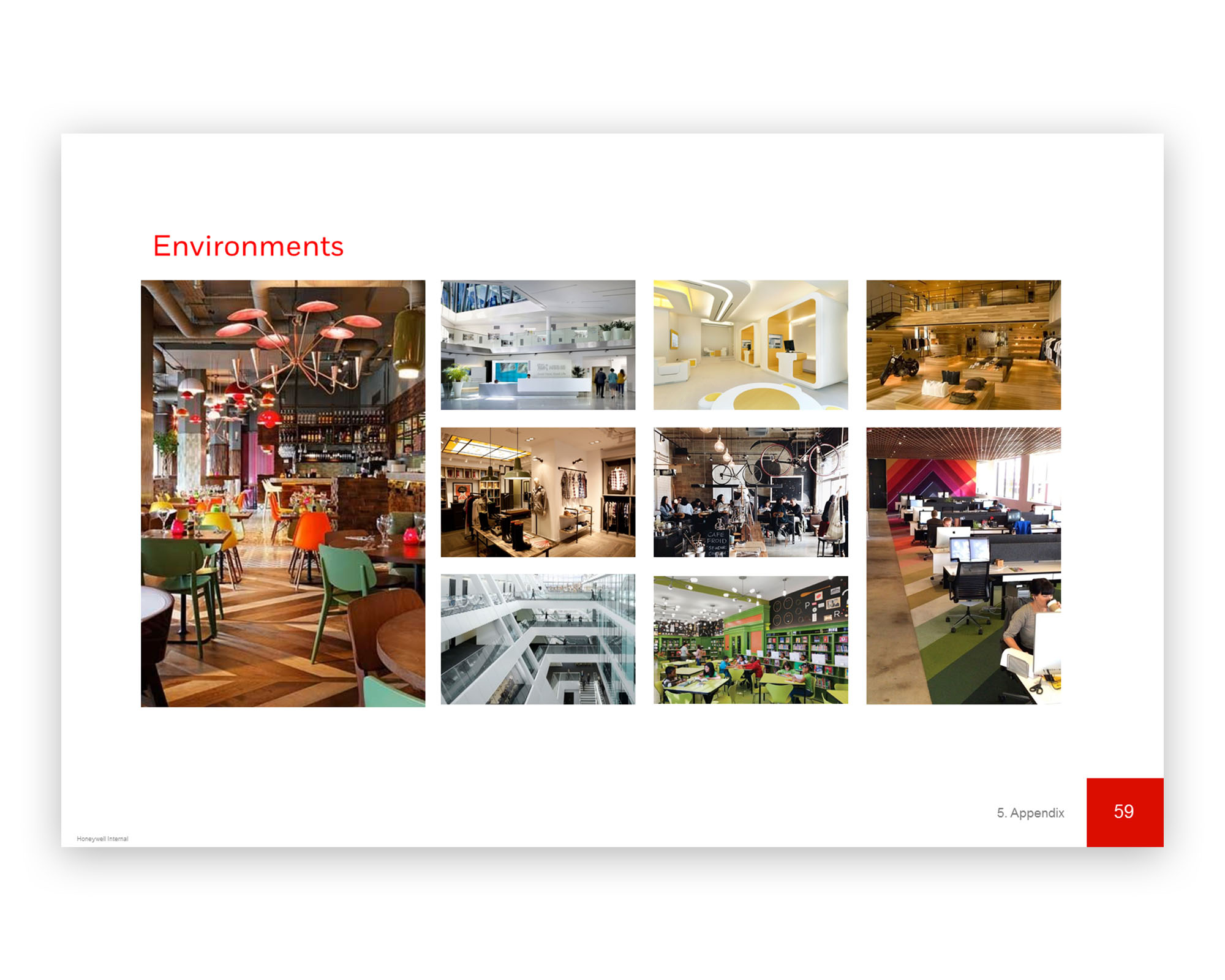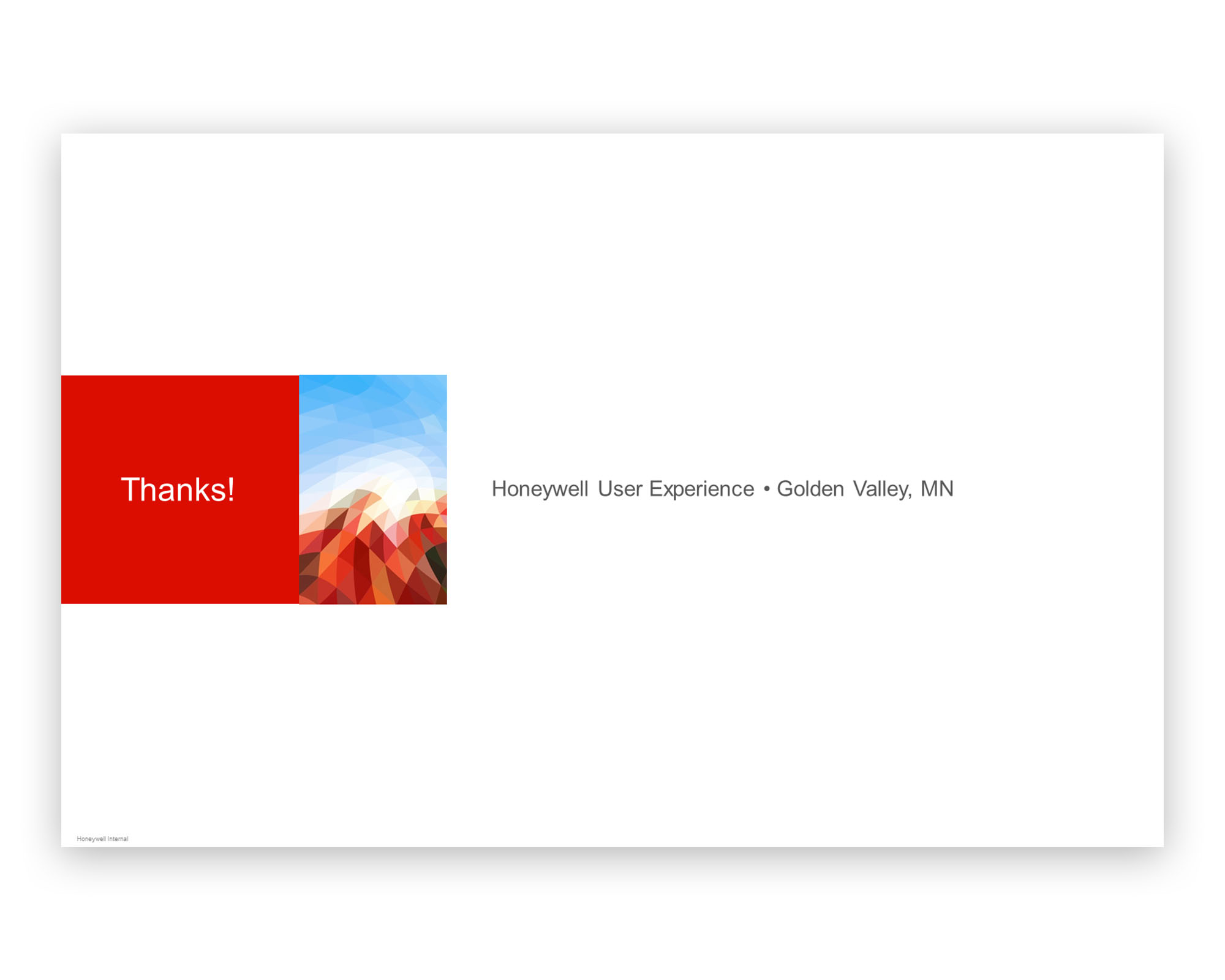Eagle Commercial Security System
In 2015, the Honeywell User Experience Design Team (HUE) was asked to provide a holistic design vision (hardware, software & service) for a security platform targeted to the light commercial buildings market. A true “one-stop shop”, this offering would be the first to market that would allow users to manager their access, video, intrusion, and fire systems all in one place.
Cut From the Same Cloth
While Honeywell had long produced all the constituent parts of such a platform, the respective business units had been largely separated by culture or organizational silo. Shortly before this program kicked off, however, these businesses were unified under a new ‘Security and Fire’ business which placed them all under the same umbrella. Beyond technical hurdles of integration (the purview of engineering) the user experience of these products also needed to be aligned in order to present the customer with a product line that felt like it was ‘cut from the same cloth’. To bridge the gap, the design team produced a ‘Design Language Strategy’ document (DLS) for the new Security & Fire business. This document distilled down our brand values into design principles that were clear and actionable for a global team working on revamping a whole portfolio of products. I was the primary author.
Roles and Responsibilities
Leading a team of 3 other industrial designers, I was responsible for the form factor, installation method, and DLS alignment of the final solution. I was also responsible for facilitating cross functional workshops and coordinating UX evaluation of hardware touchpoints.
Global Research
With Eagle intended to be a global platform, our design team embarked on multi-week research trip throughout Europe and the US to get a better understanding of our users throughout the globe. By talking to security dealers, installers, and business owners we were able to understanding their pain points and identify areas of design opportunity. Not surprisingly, there are major differences in cultural norms and expectations. From aesthetic preferences, to the expectation of privacy, to the role of tradesmen, we began to realize the challenges when deploying a single platform worldwide.
Design Jam
The product team consisted of dozens of different contributors with literally hundreds of years of experience in the security and fire industries. Not to mention these contributors had previously been siloed away and many of the stakeholders had never met. Aligning such a diverse group with deep convictions about their particular area of expertise would prove no small feat. To foster collaboration (and move the project forward) we relied on multiple ‘design jams’. Based on the Google Sprint model, these intensive, on-site workshops were structured to gather people in a neutral environment, review insights we’d seen from our customers, and affinitize additional insights from around the room into key opportunity spaces.
Outcome Driven Design
On this project I championed the use of ‘experience outcomes’ (XOs); structured statements which capture the core needs of our users. A fundamental part of our Outcome Driven Design process, these statements are free of implied ‘solutions’ and help establish the metrics by which we would evaluate future design concepts. With our prioritized list of outcomes in place, our team was able to stay focused on our users, easily evaluate the success of our designs, and align with the business.
“The greatest challenge to any thinker is stating the problem in a way that will allow a solution.”
Concept Development
Leading a small team of designers, we worked iteratively to ‘move the needle’ on our experience goals, address the concerns of our business/engineering partners, and align to our new Design Language Strategy.
Main Enclosure - This enclosure would house the ‘brains’ of the system including the main PCB, backup batteries, and peripheral devices. We also would produce a ‘high security’ and ‘fire’ variant of the same enclosure.
Graphical Keypad - An ‘all-in-one’ keypad from which users can perform most of the functions of the system. We would also produce a 'basic' version of this keypad which would have much more limited functionality.
UX Evaluation
I worked very closely with our UX researchers to establish a regular cadence of concept evaluation with users. This continual feedback loop with users was pivotal in quickly refining concepts and aligning stakeholders. Specifically to address our experience goals around installation, we relied heavily on handmade prototypes that simulated the installation process. With this method, we were able to get meaningful feedback much earlier in the design cycle.
Participant assembling our hand-made prototype.
The modules had just enough fidelity to get the data we needed for refinement and decision making.
Attributes of the solution
With feedback from users, we were able to dial in a solution that balances business, technology, and experience goals into an offering that is simple to use, flexible to its application, and very stylish.
Simple install & Replacement OF Modules
To improve the scalability of the system and reduce install times, our team developed a modular system based on 'rails' and 'sleds'. Similar in concept to a din rail, these features inside the main enclosure allowed installers to put modules ('sleds' in any location the wanted. We also introduced removable terminal blocks so installers could quickly remove and replace components as needed without the need to label and rewire.
The main panel was built to accomodate many different configurations of modules, depending on the customers needs for that particular system.
We proposed that the main PCB and add-on modules be contained in a simple plastic housing to protect the components, improve the install/service experience, and clearly label the connection terminals.
Instructions in Context
Commercial security systems can be quite complex. To reduce the memory challenge, instruction notes and wiring diagrams were printed directly on the module 'card' to give the installer the information they need in context. The module was designed such that it would be inexpensive to print additional cards for the other languages. The terminal blocks themselves (where the wires attach to the board) were color coded so that the installer can remove and replace a module quickly.
Sleek, Ergonomic Design
Acting as both a input device and an access point (badge reader), the keypad needed a form that could accommodate both. The simple design of the keypad angles the UI toward the user - increasing visibility and reducing glare - while angling the badging surface down to accept a swipe coming from below. This 'bent' surface design also provides room for terminal blocks inside without increasing the visual weight of the whole product.
Modular Platform
The same chassis was planned to be reused between the graphical keypad option and the basic. This would not only provide an advantage in manufacturing, but the common mounting plate would provide the user an easy upgrade path that wouldn't require them to rewire. As shown below, the same visual style for the keypad could also extend to a larger form factor that would be suitable for the fire and video variants.
